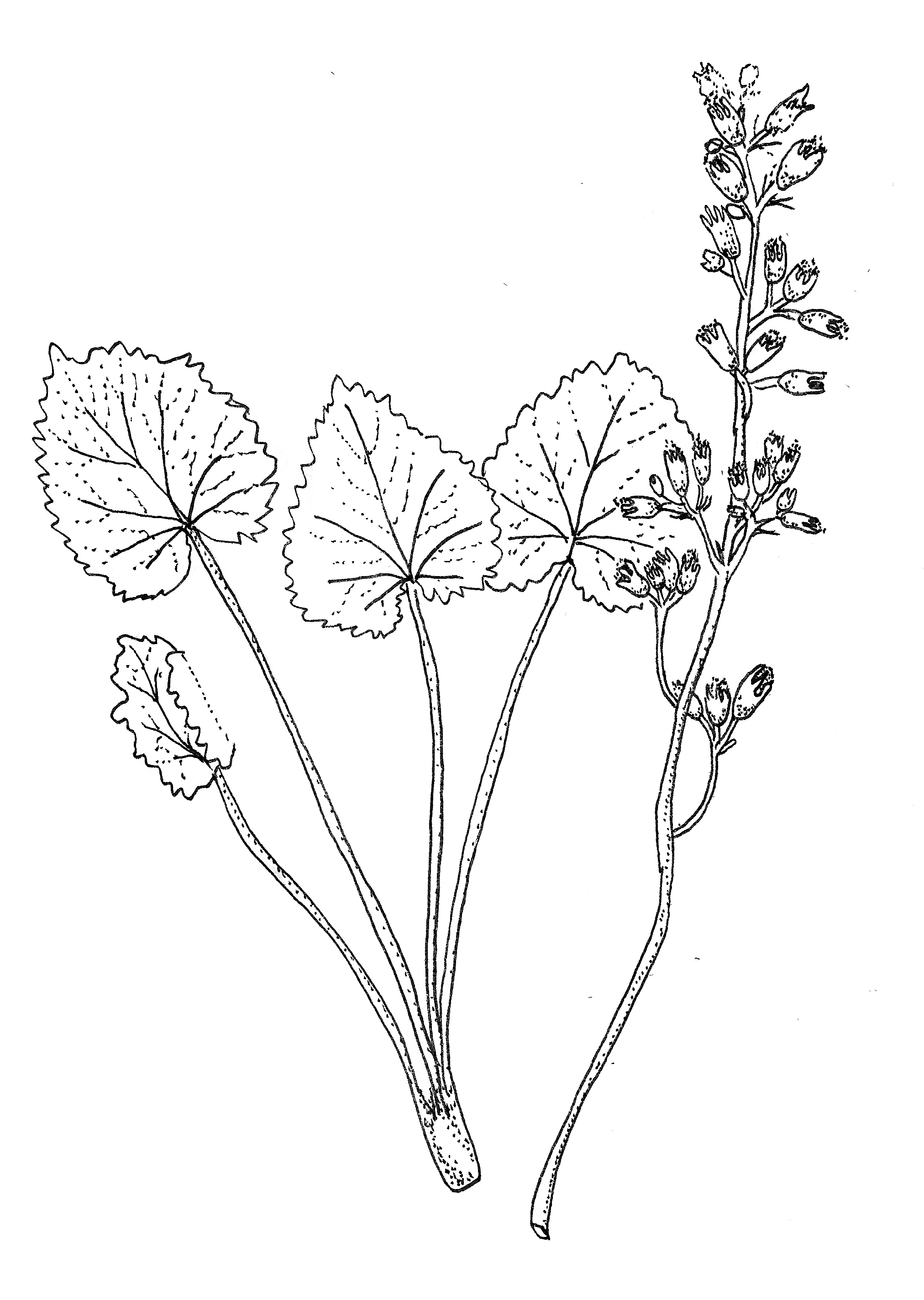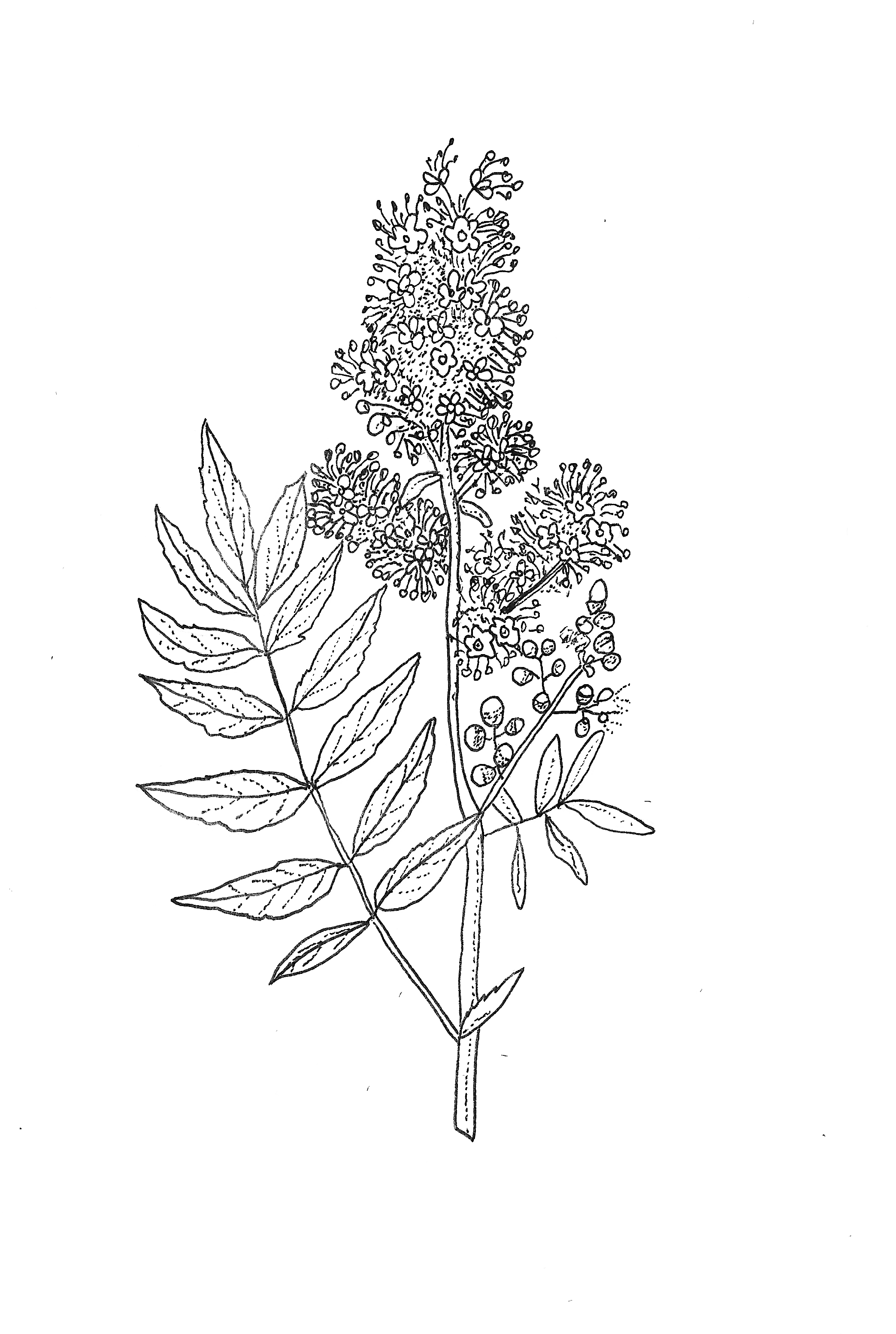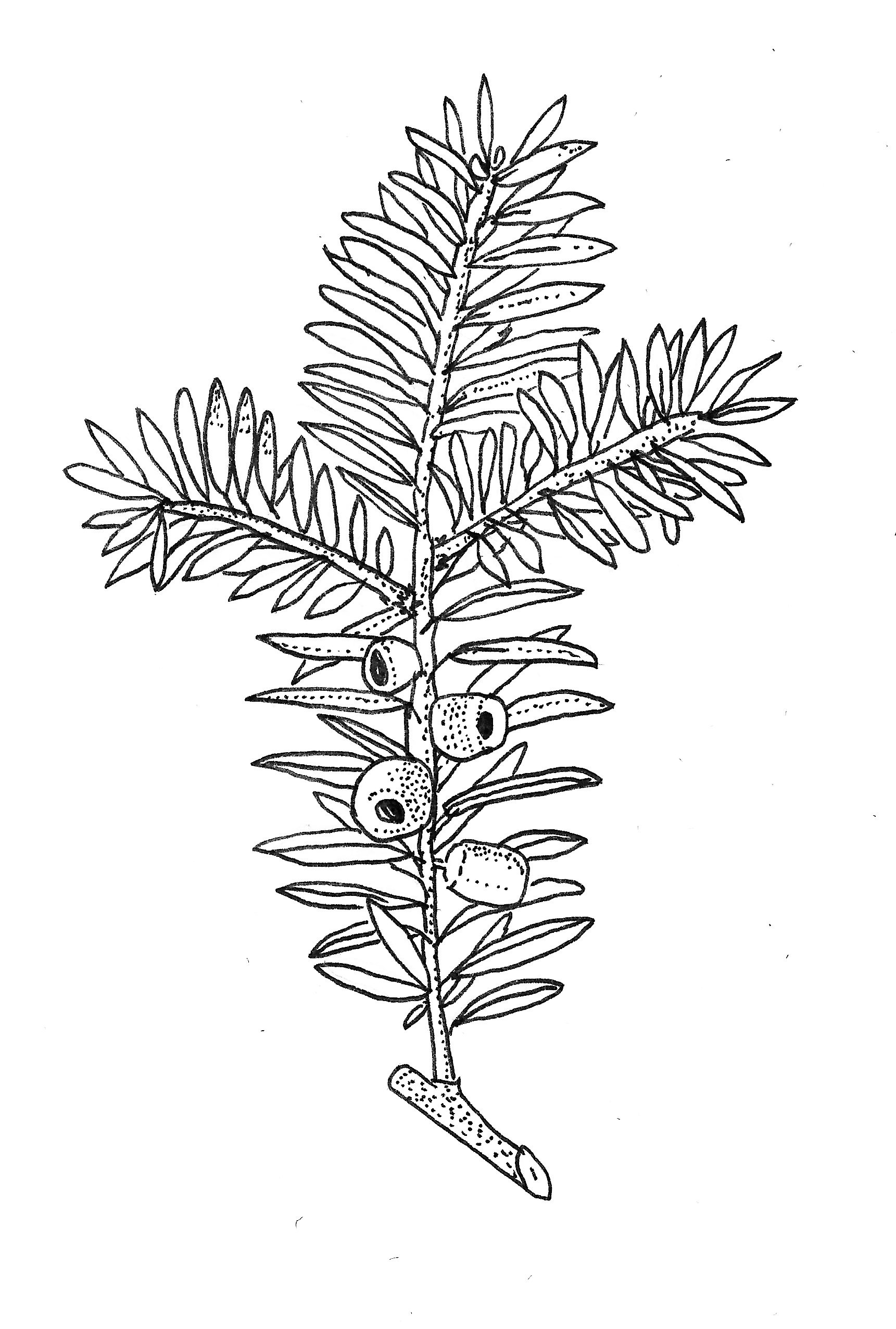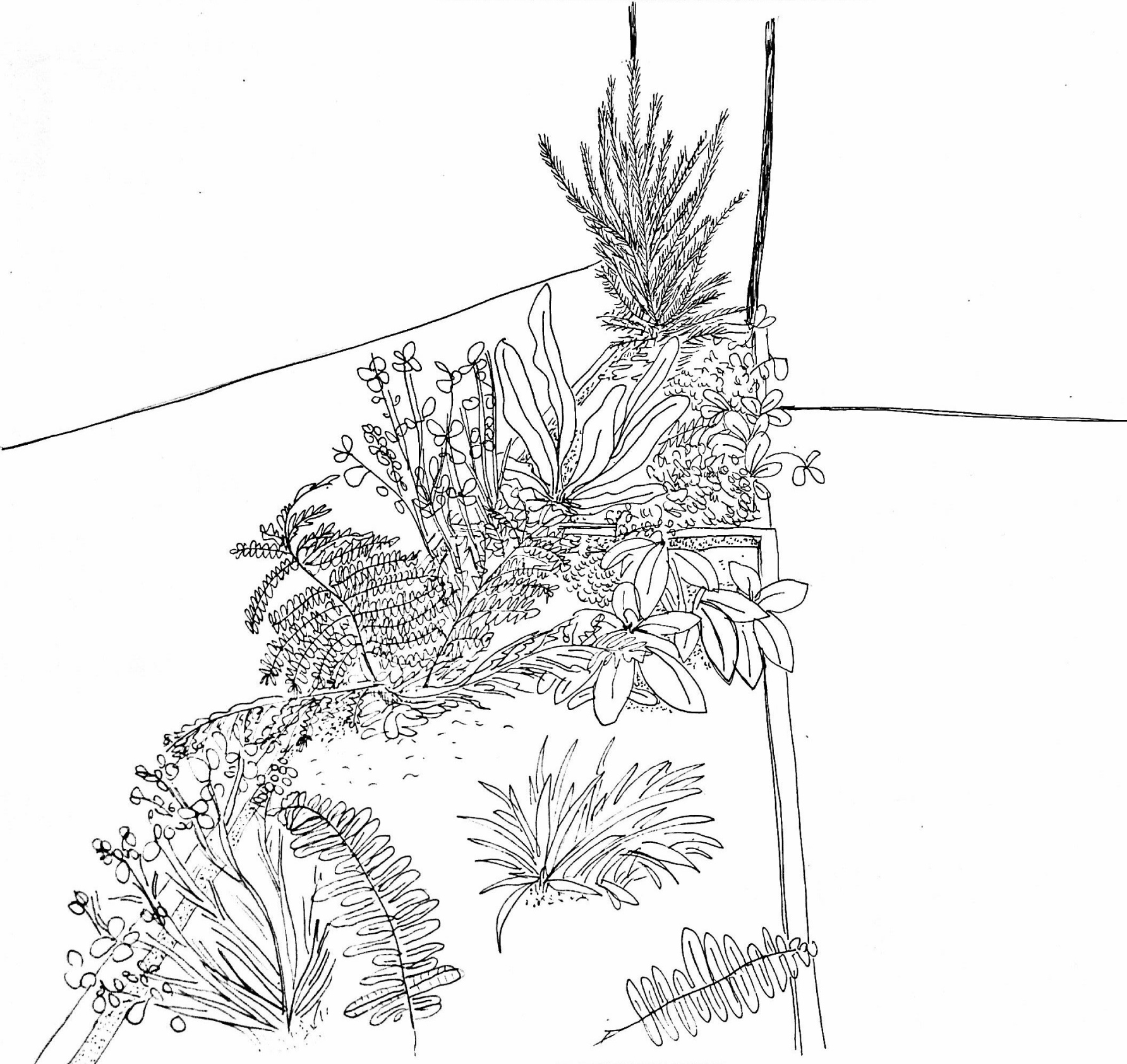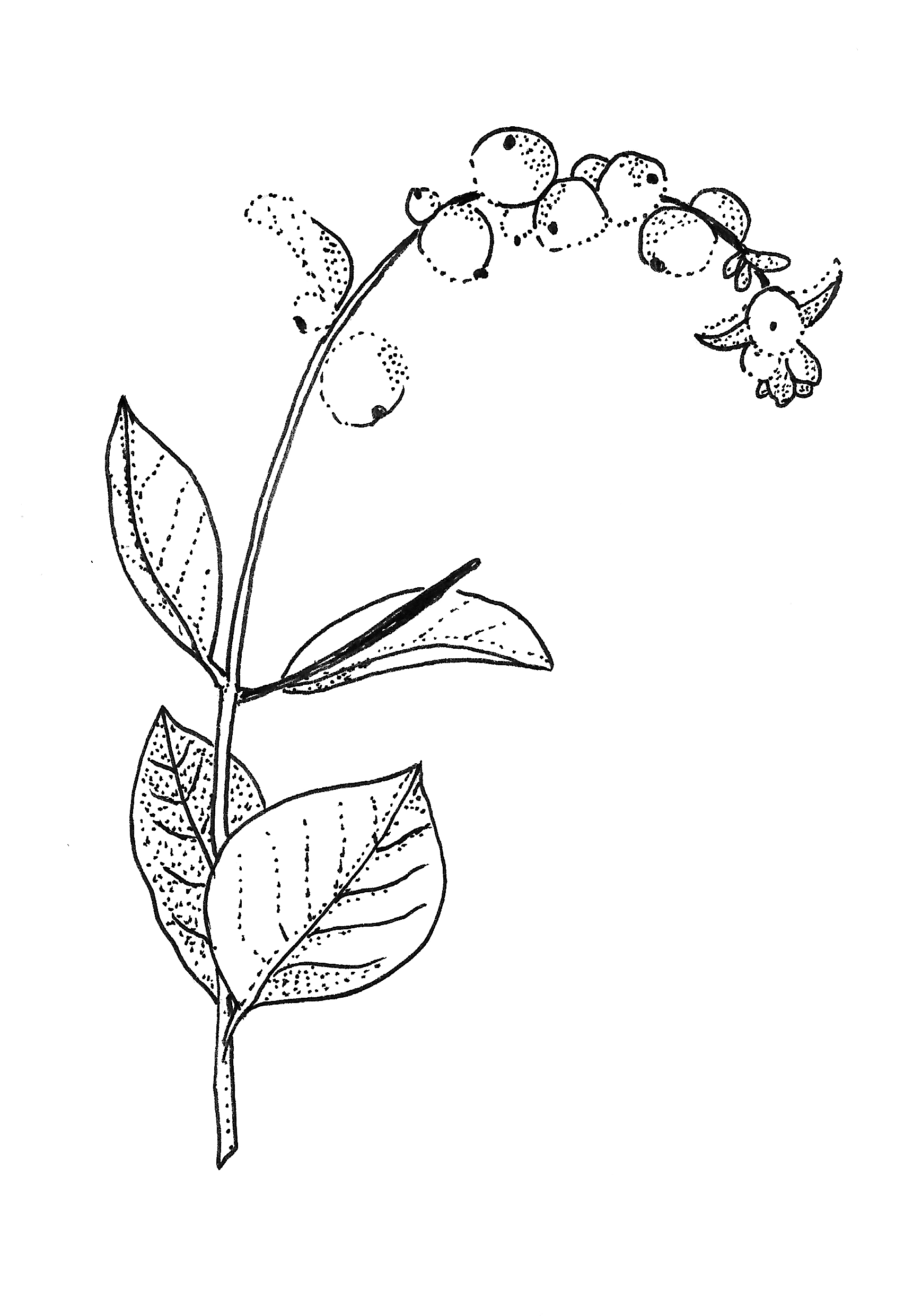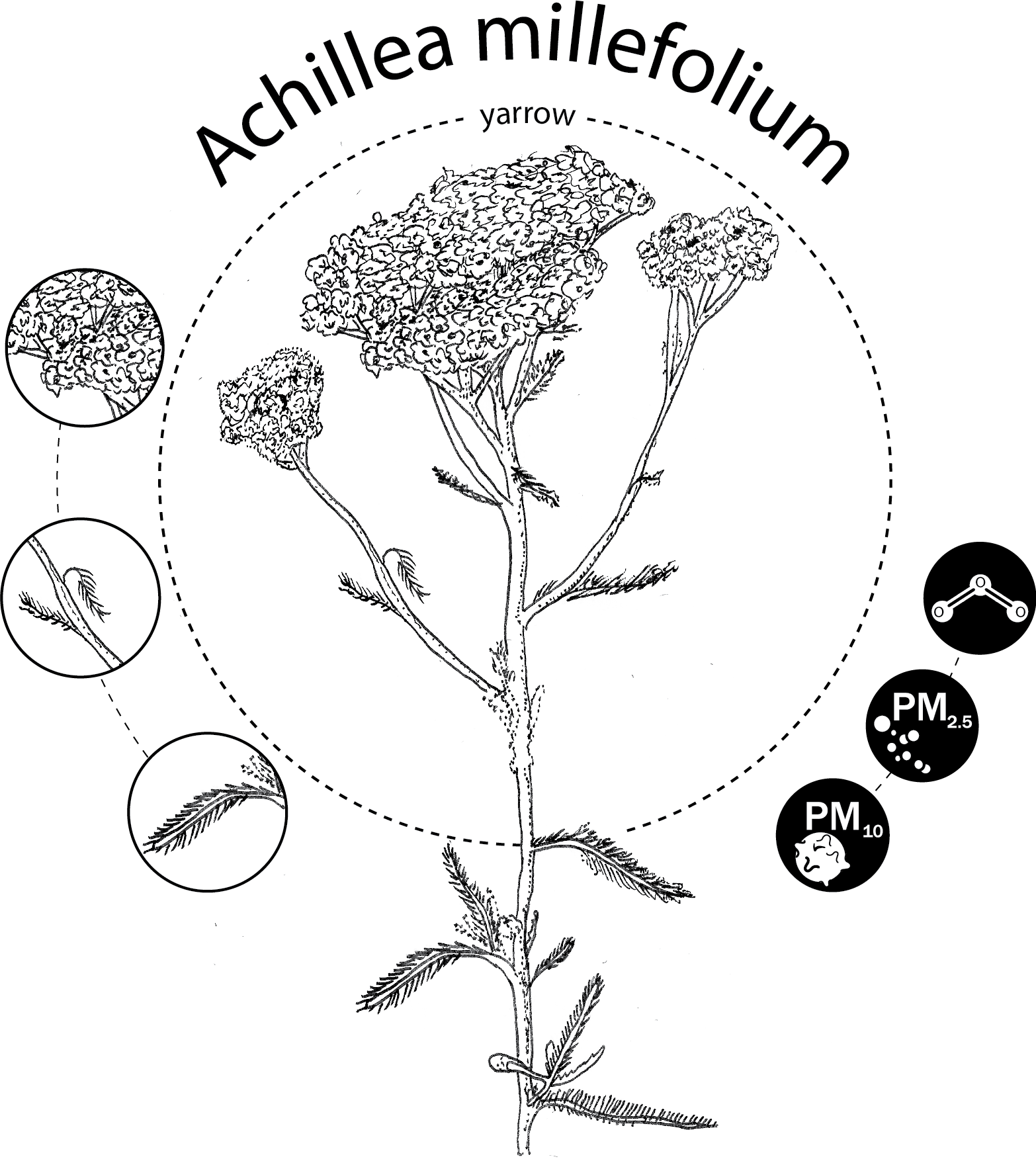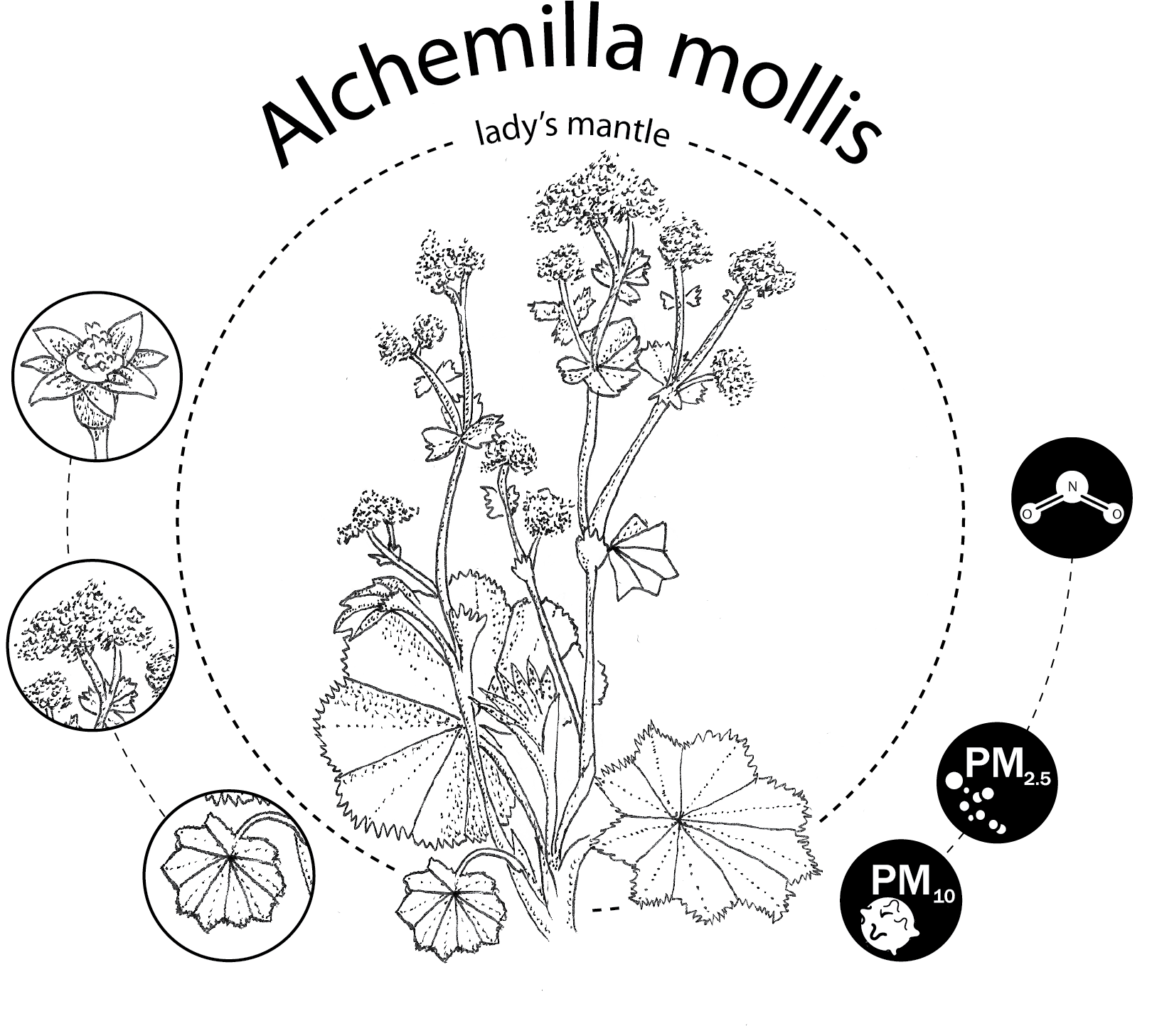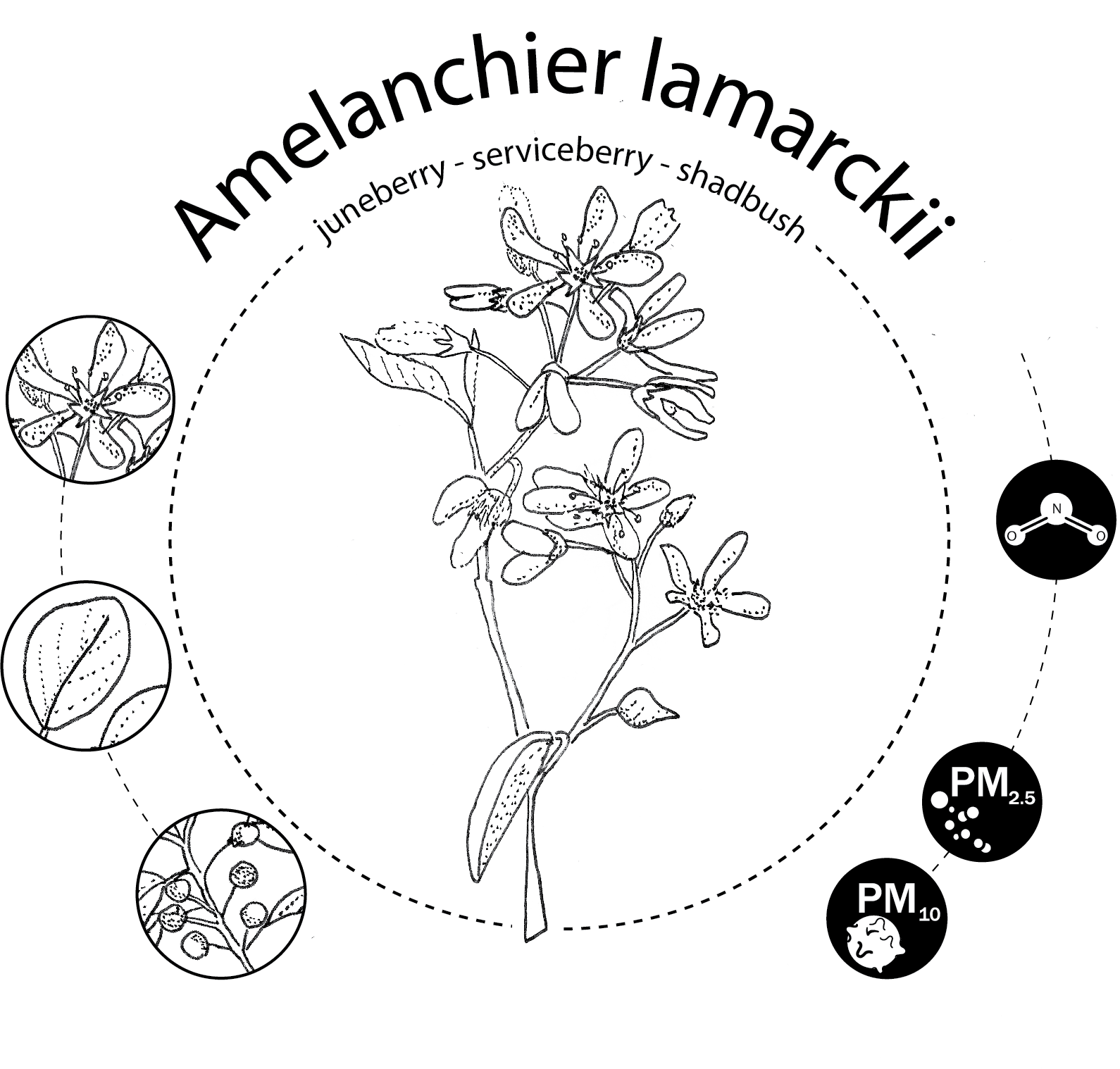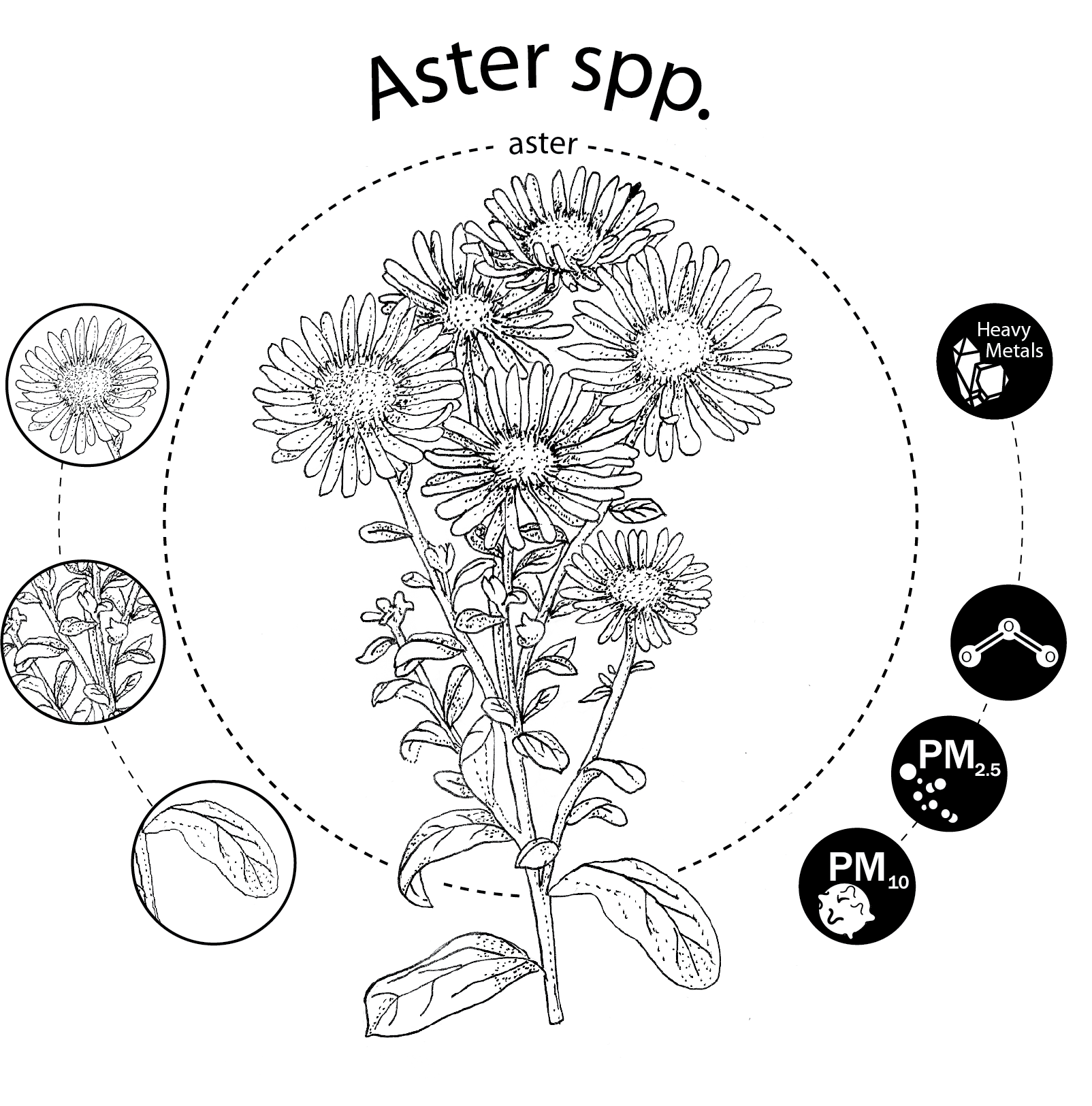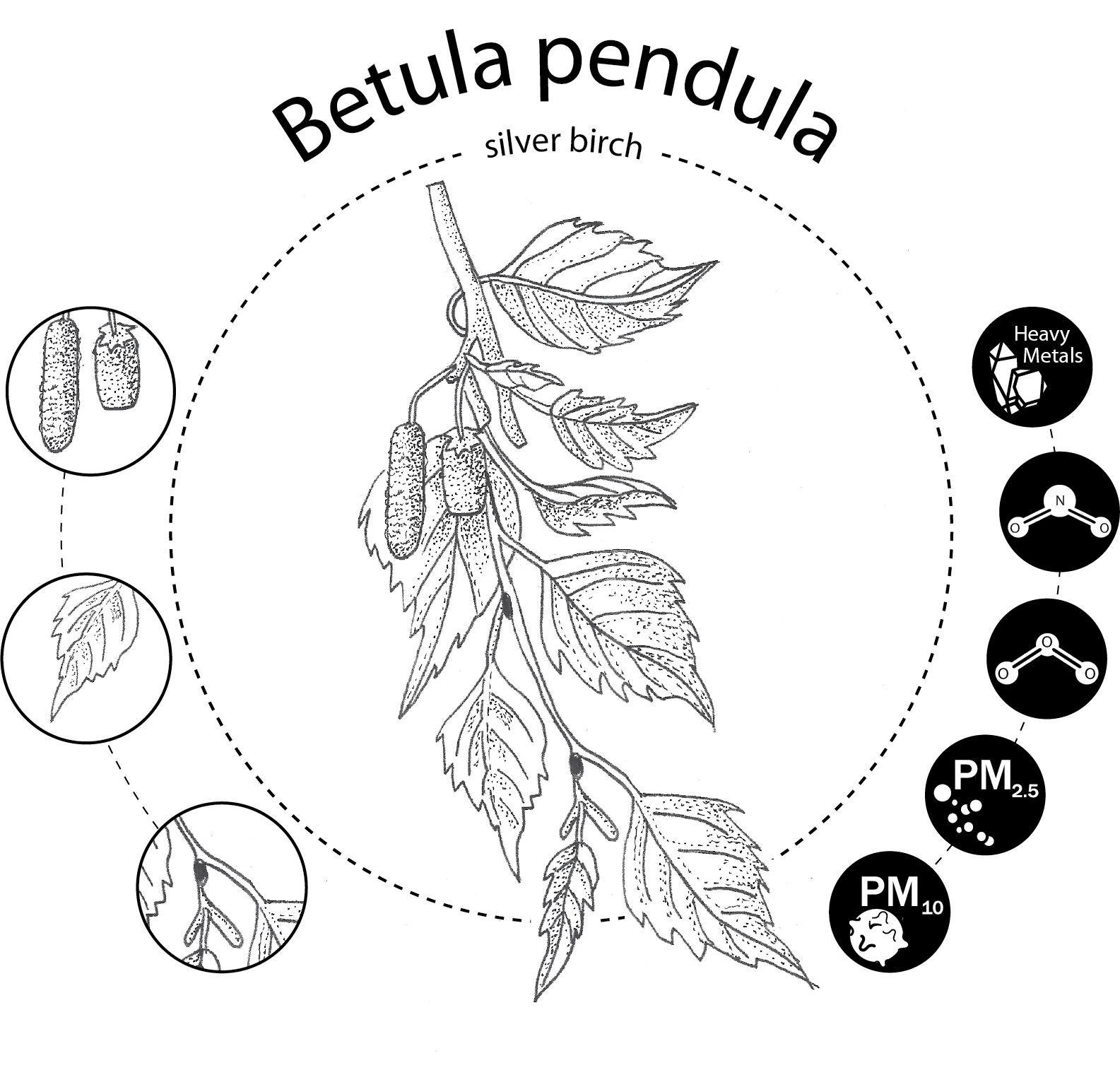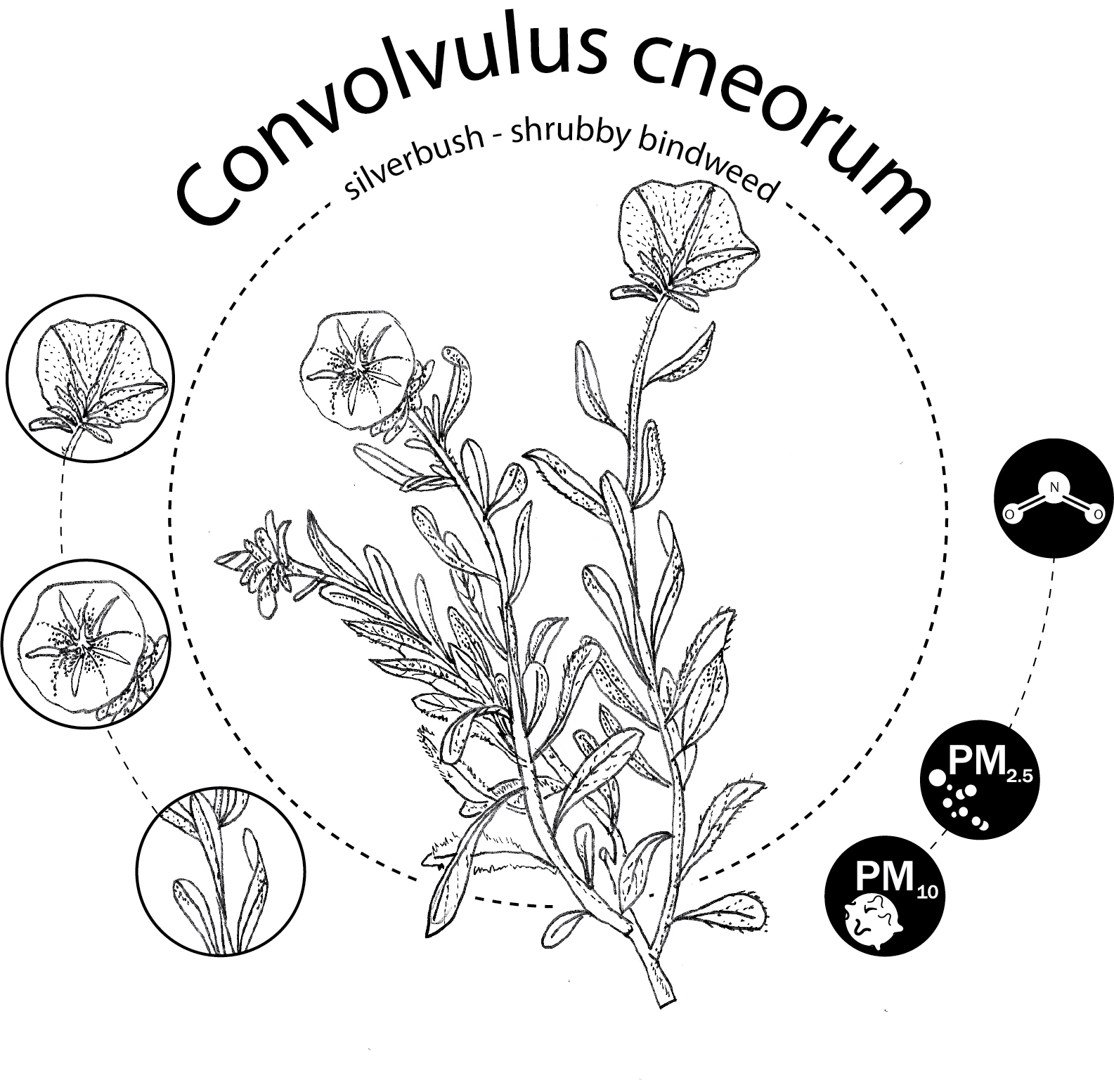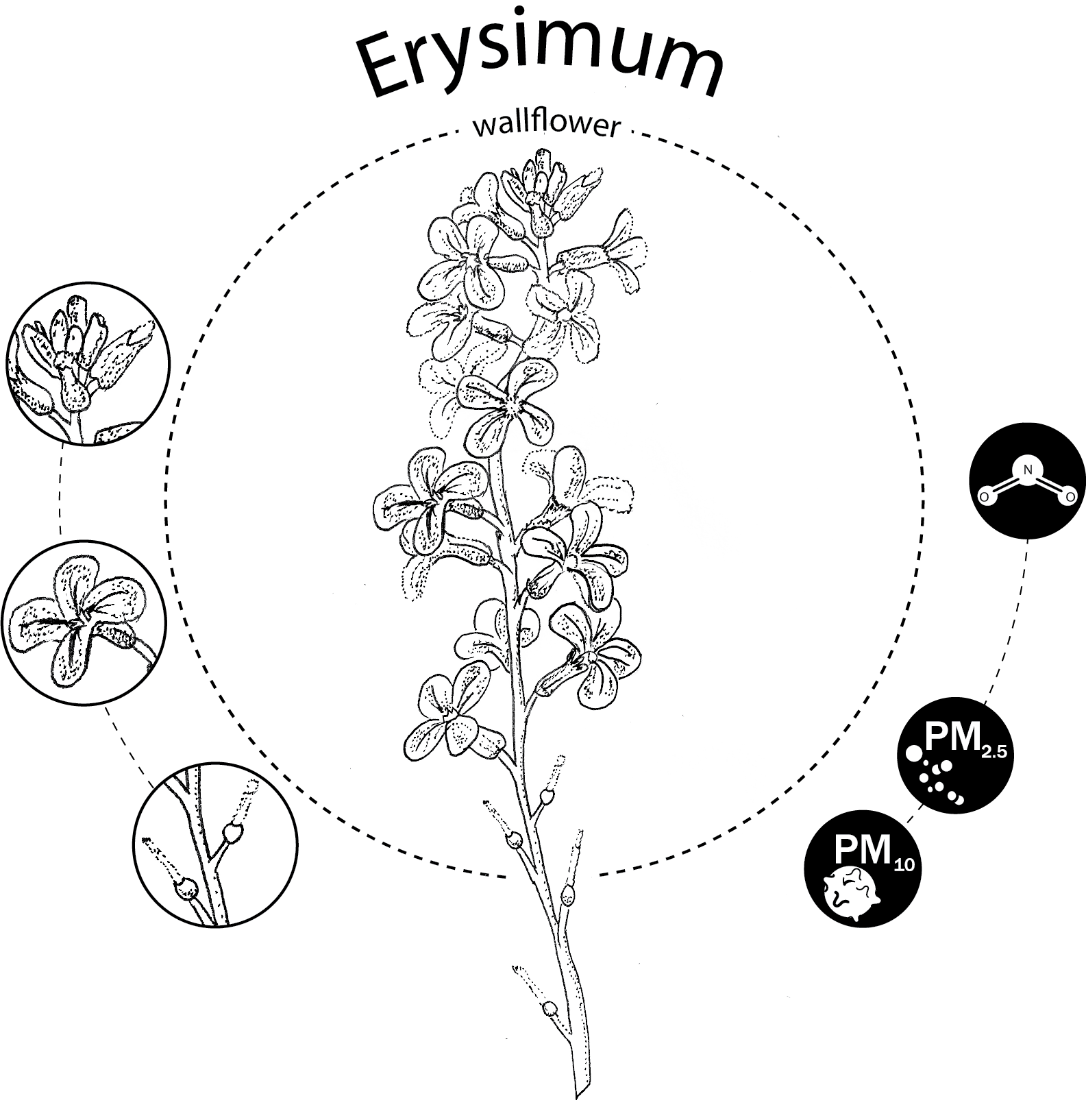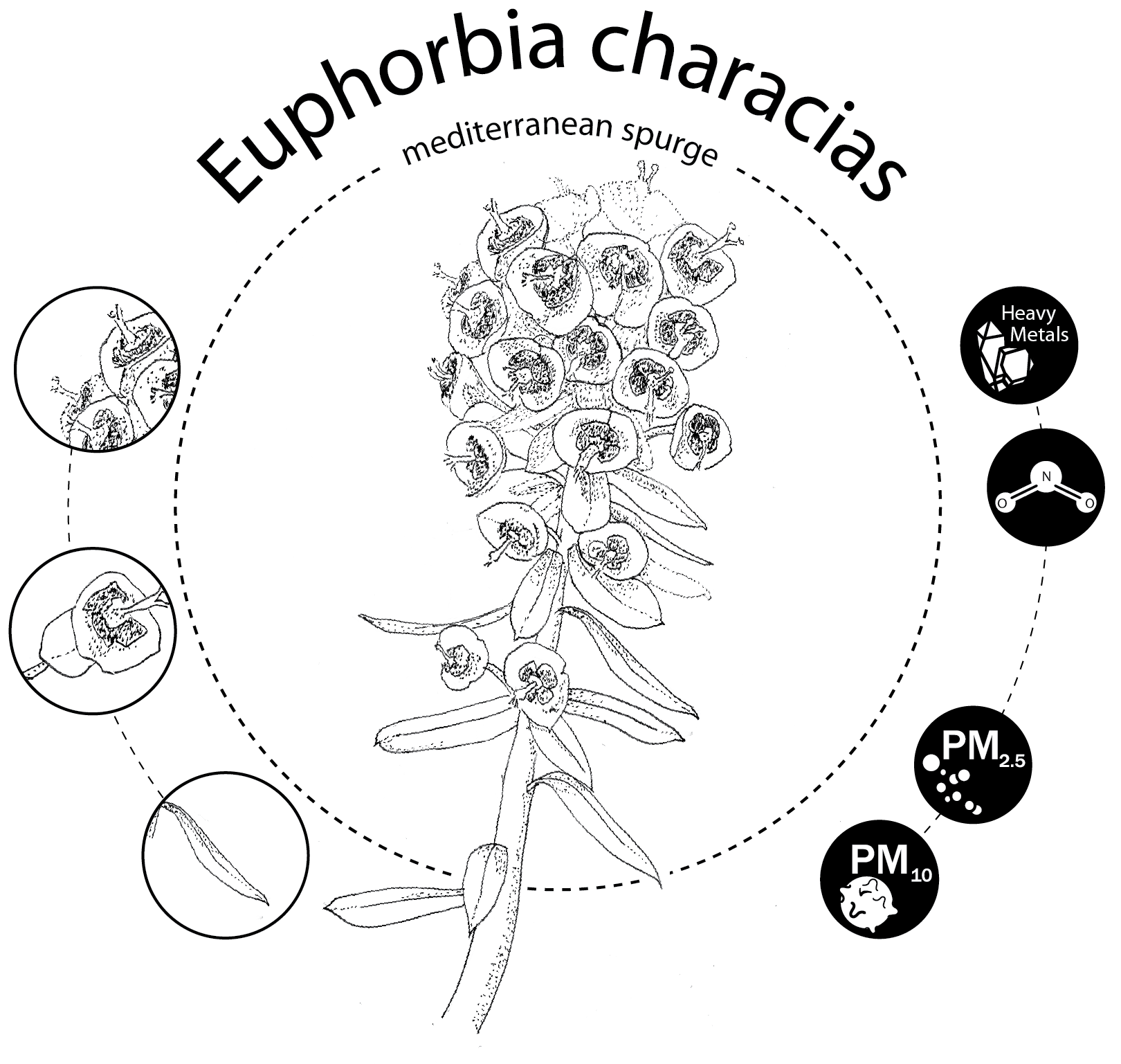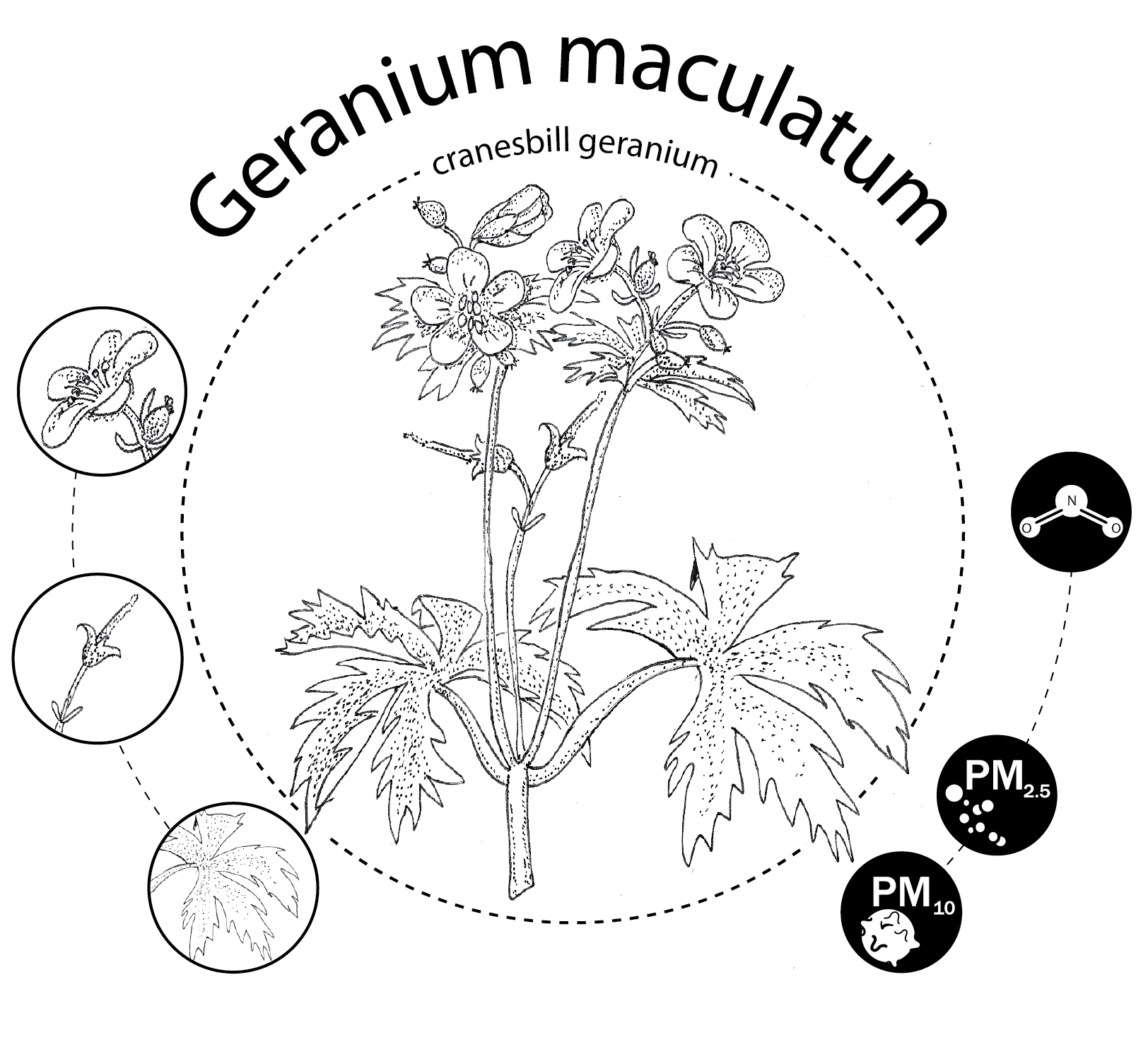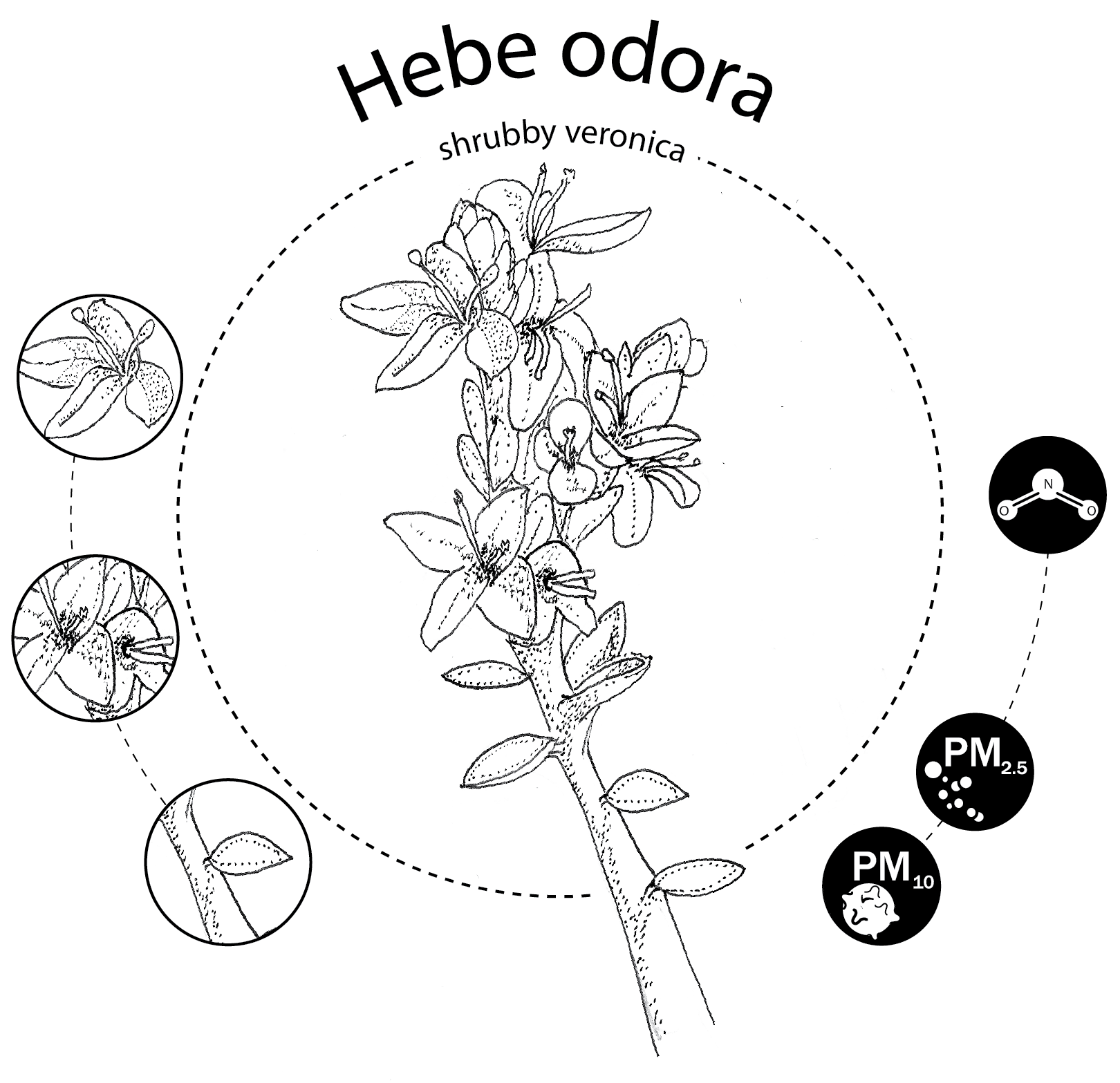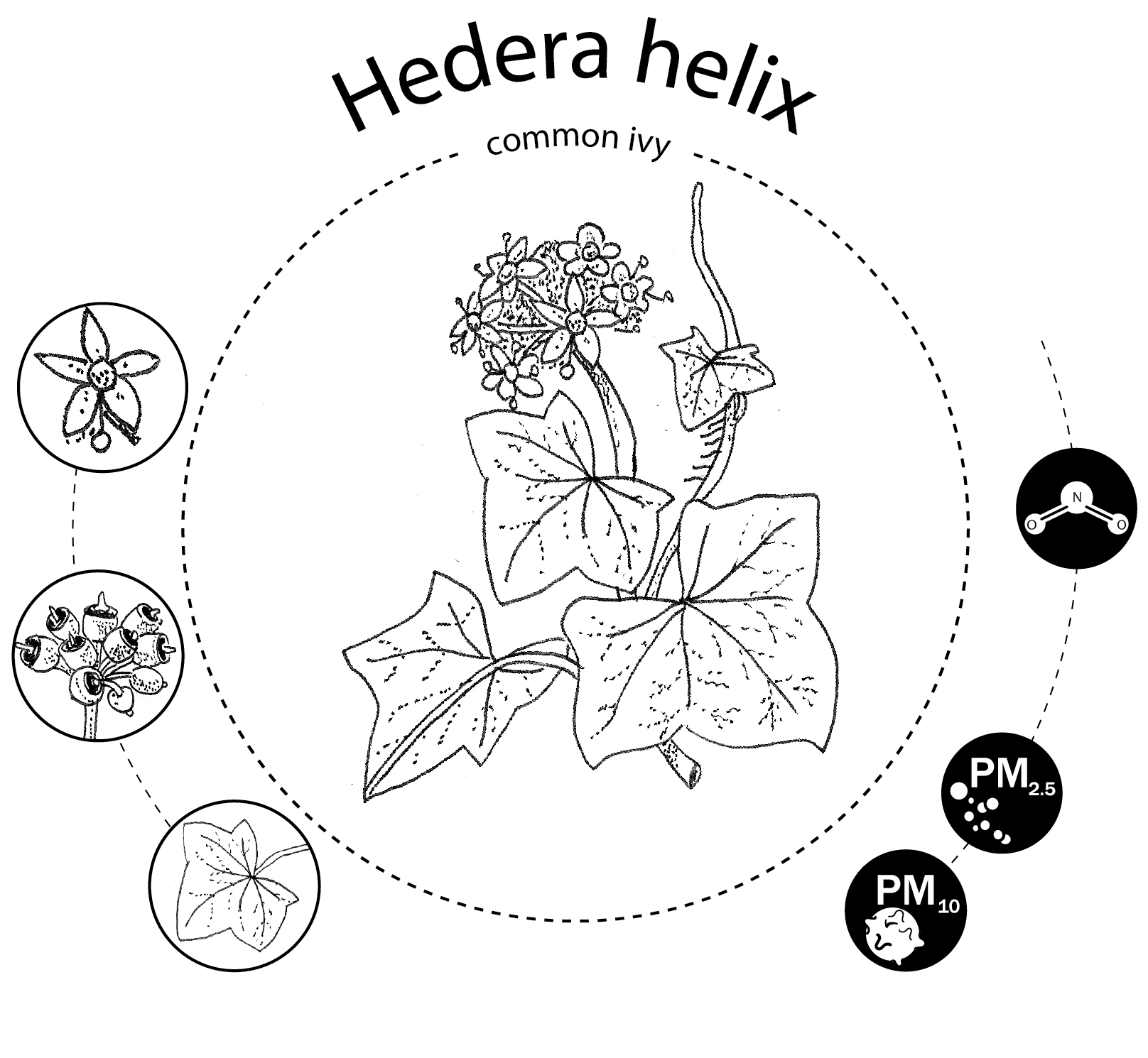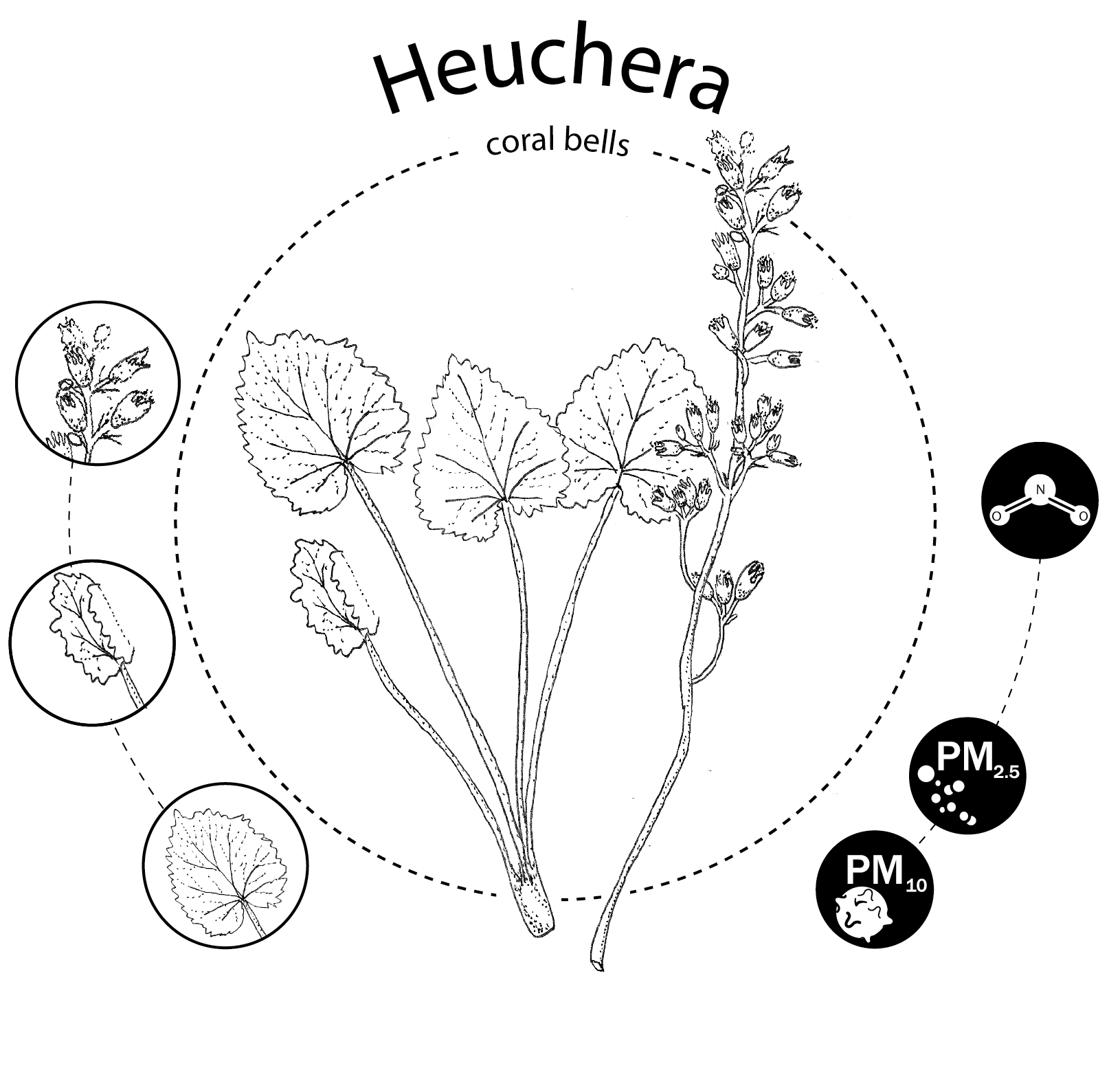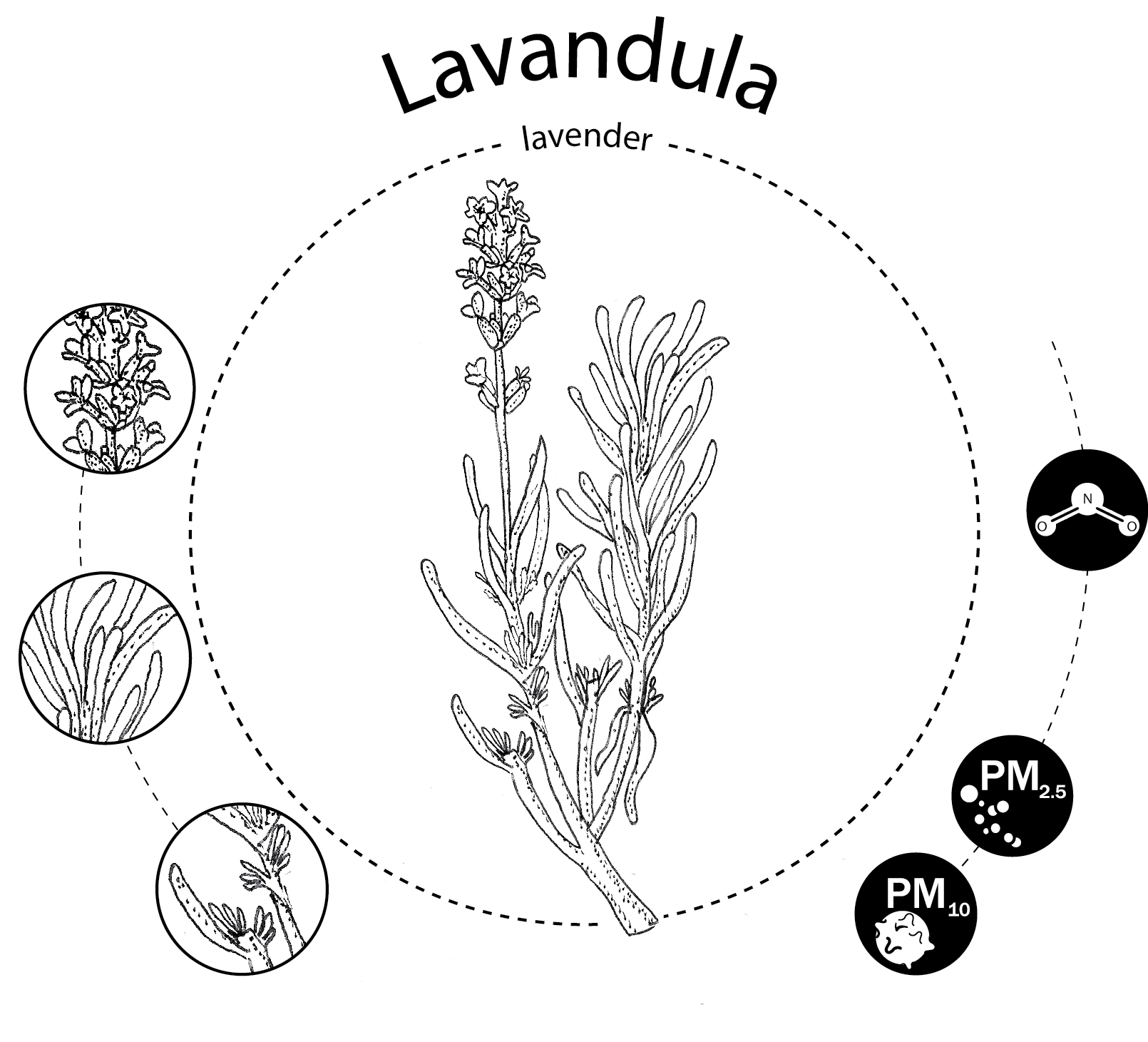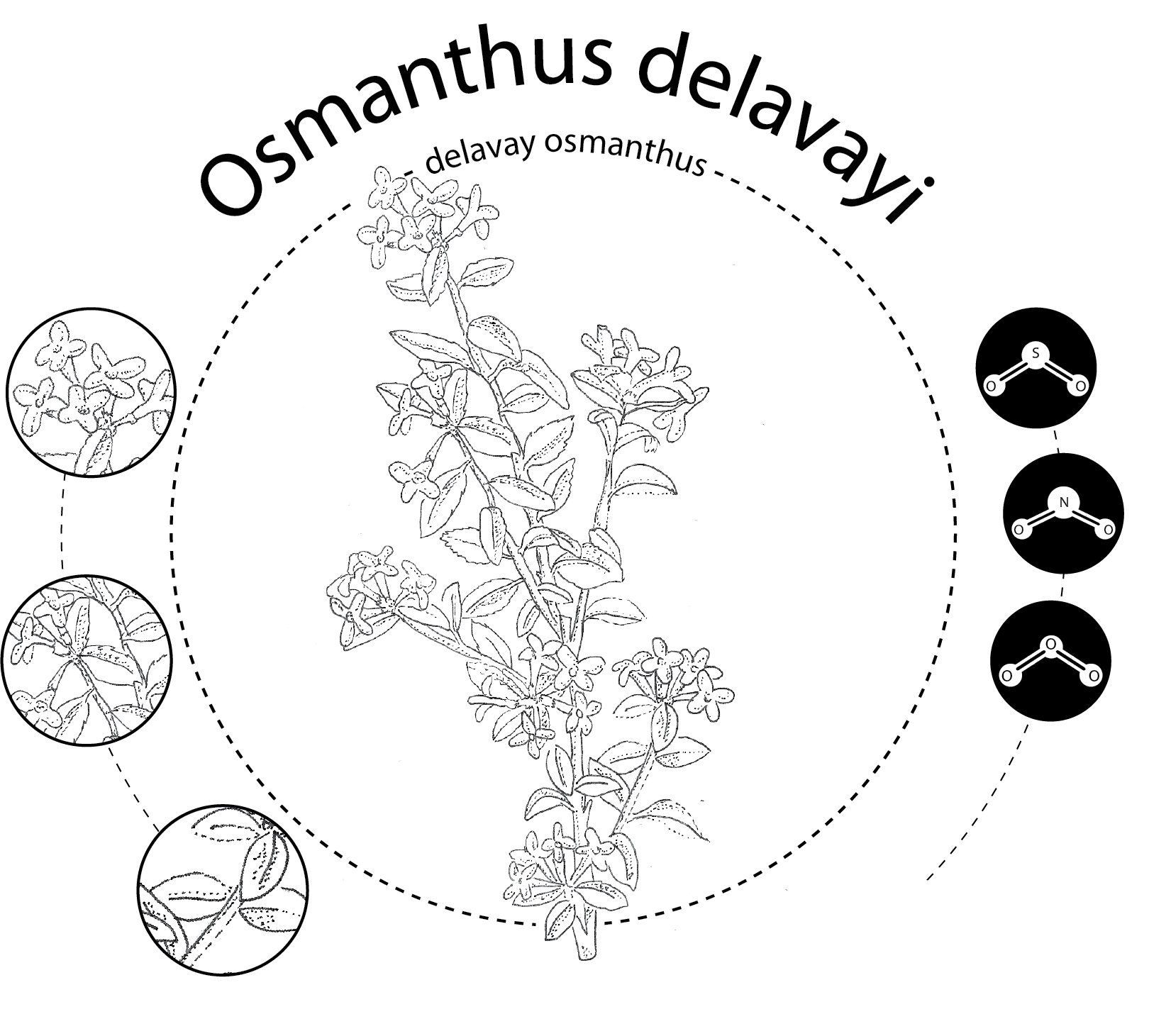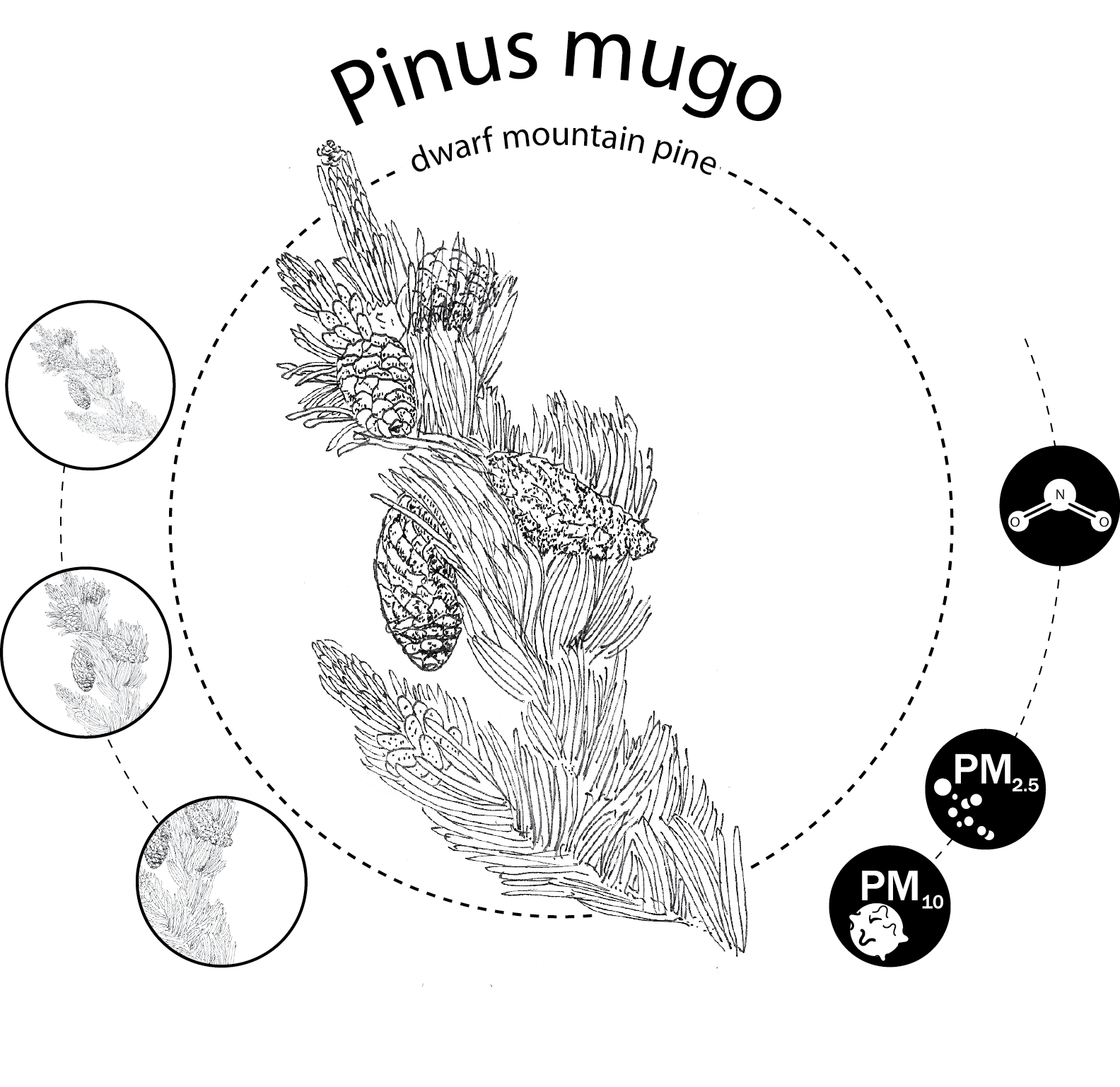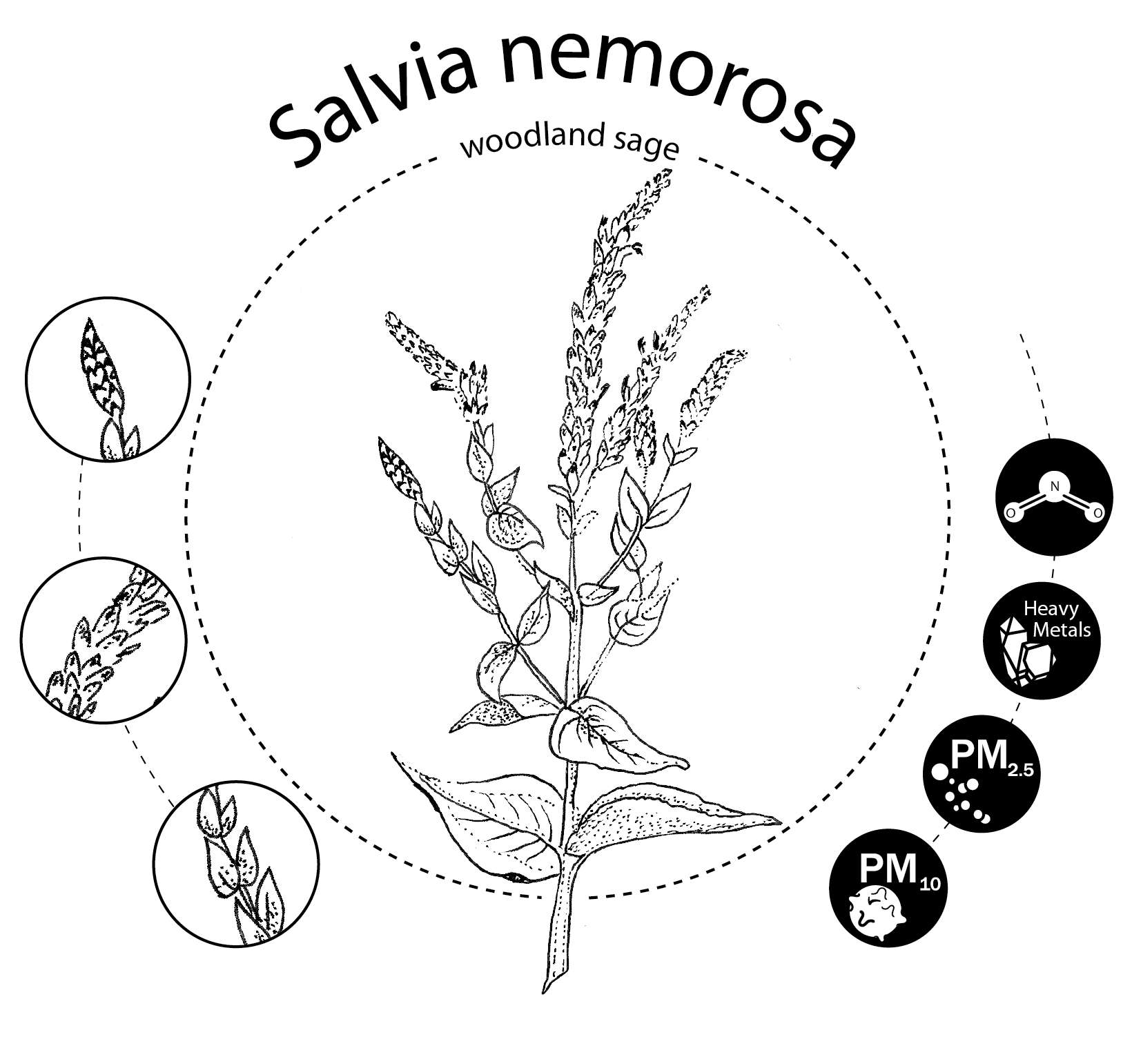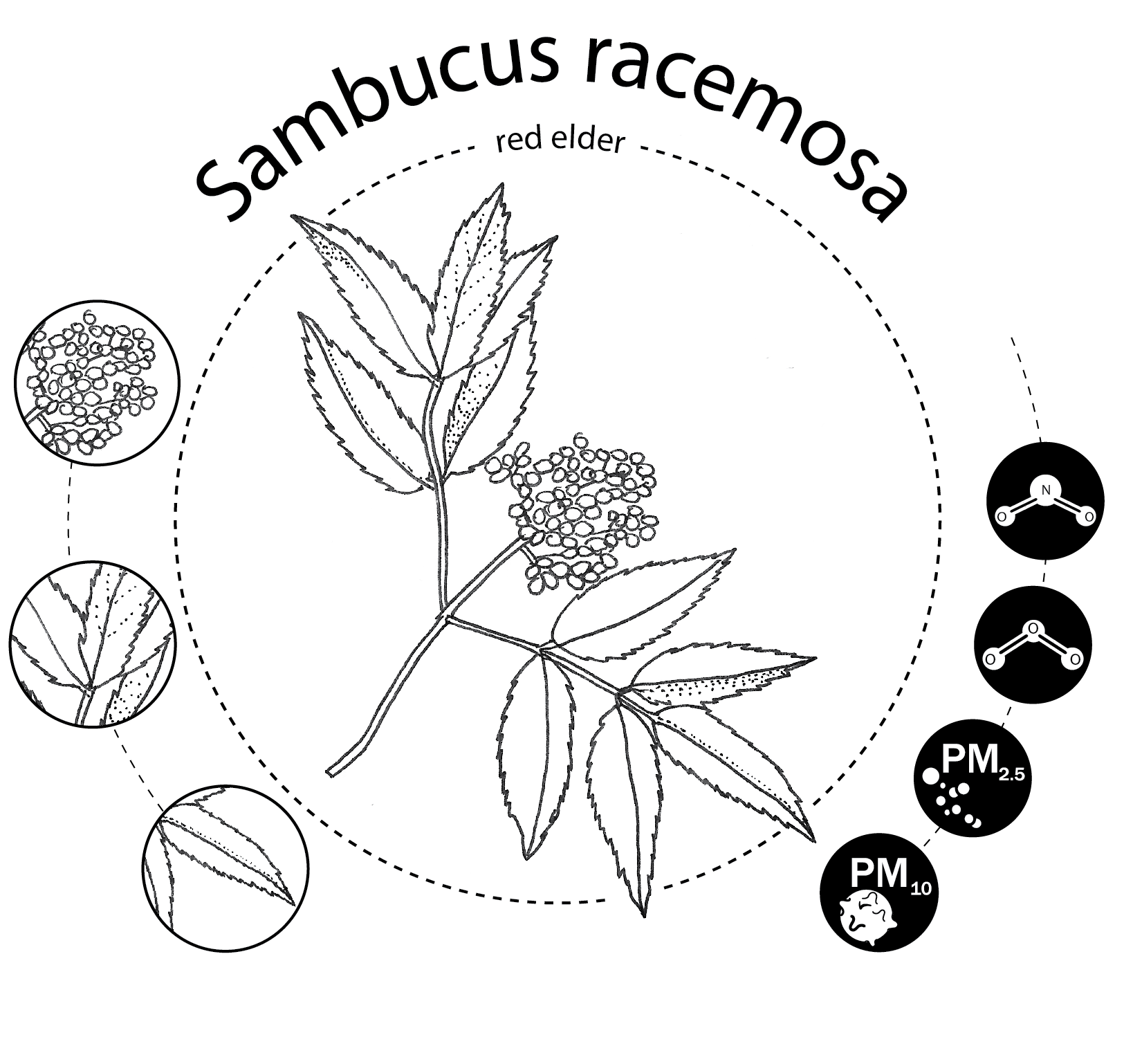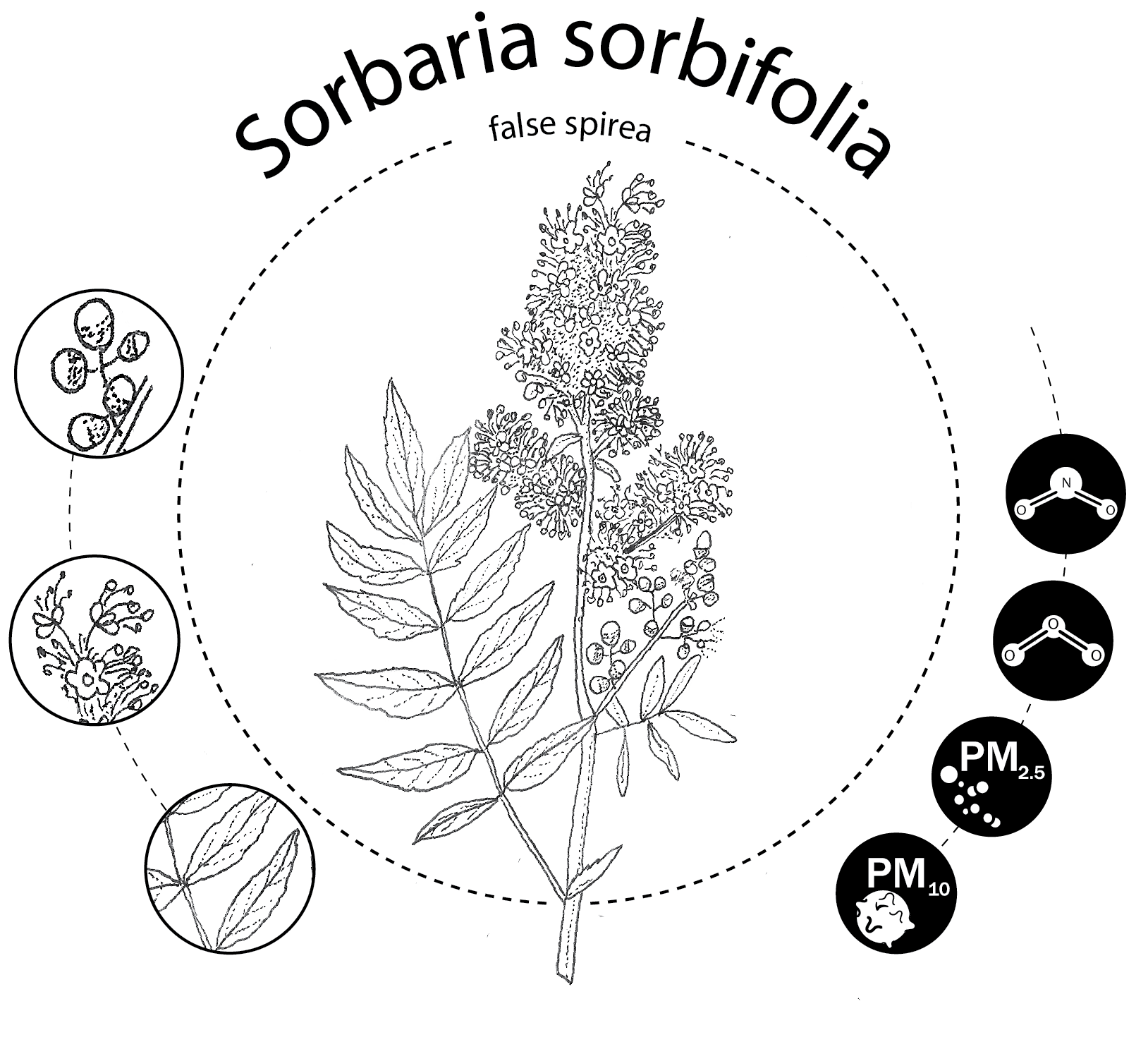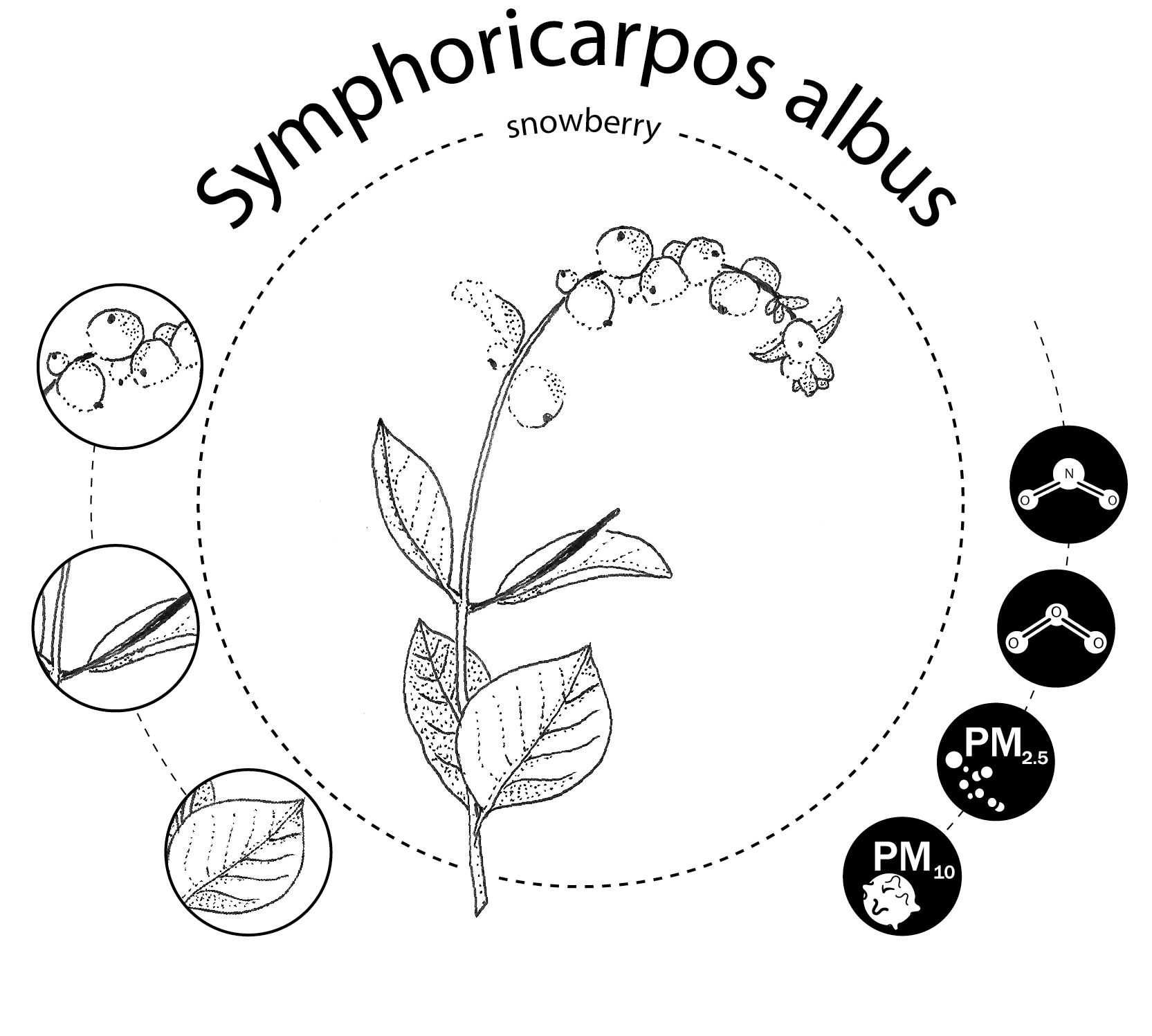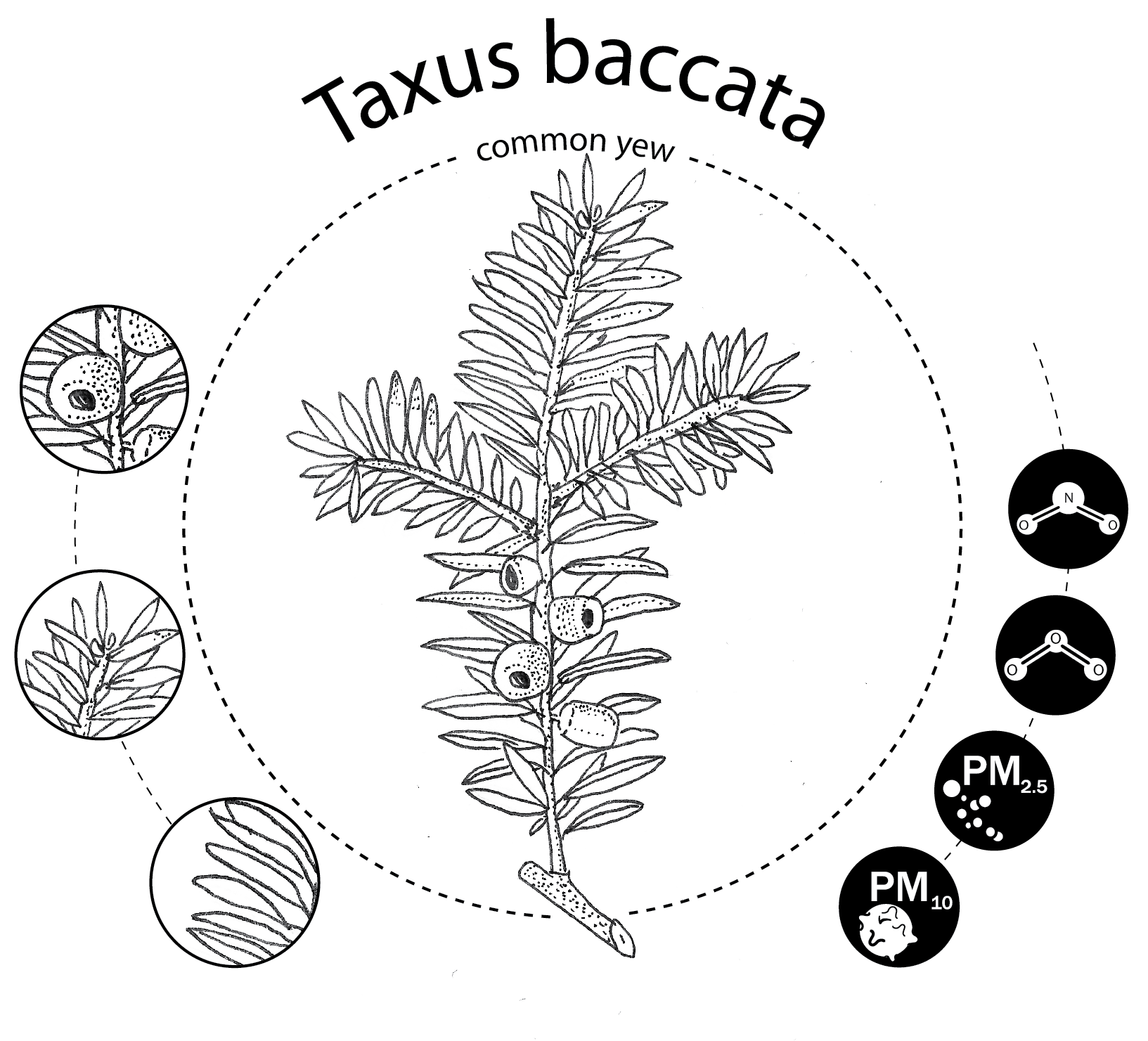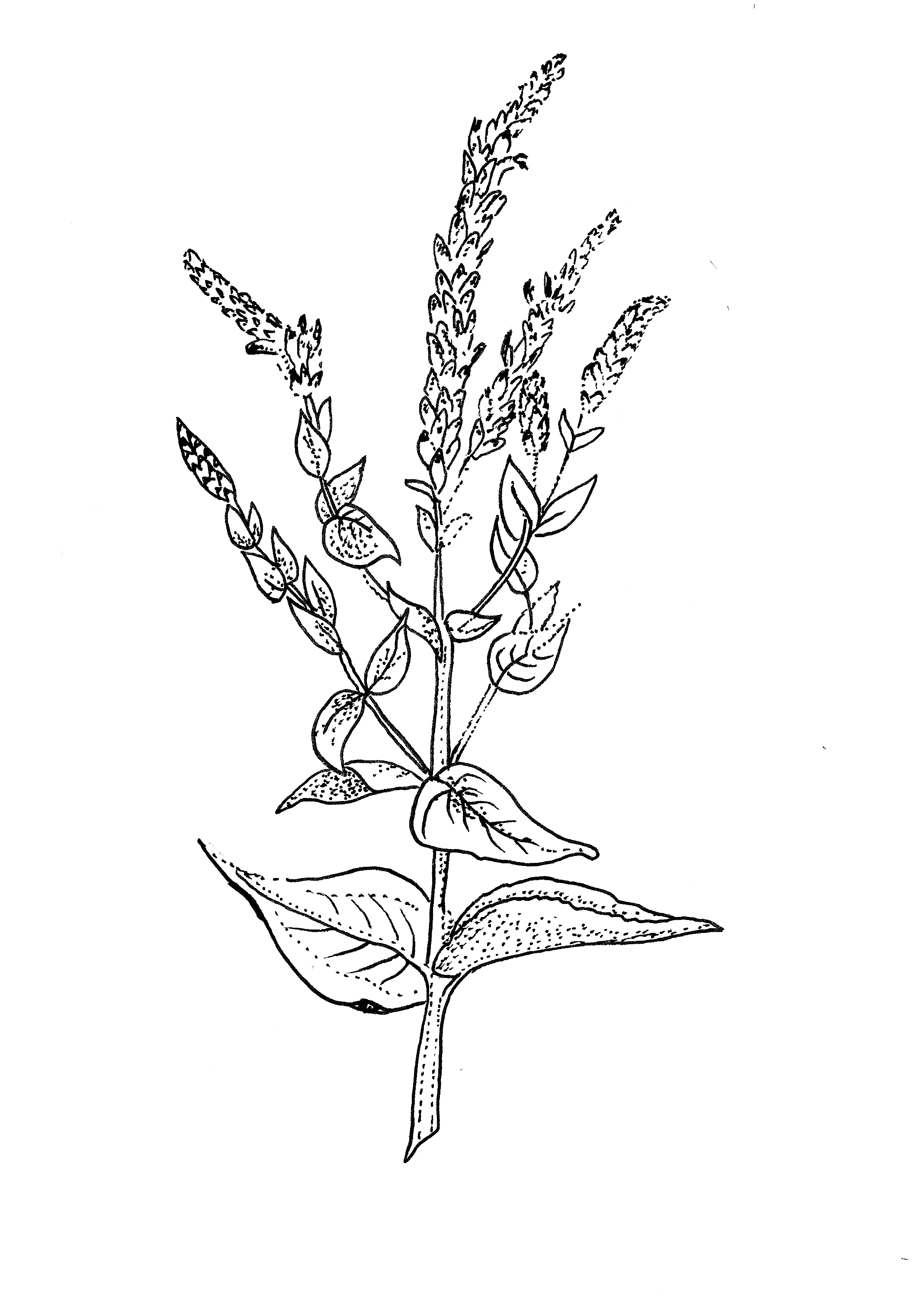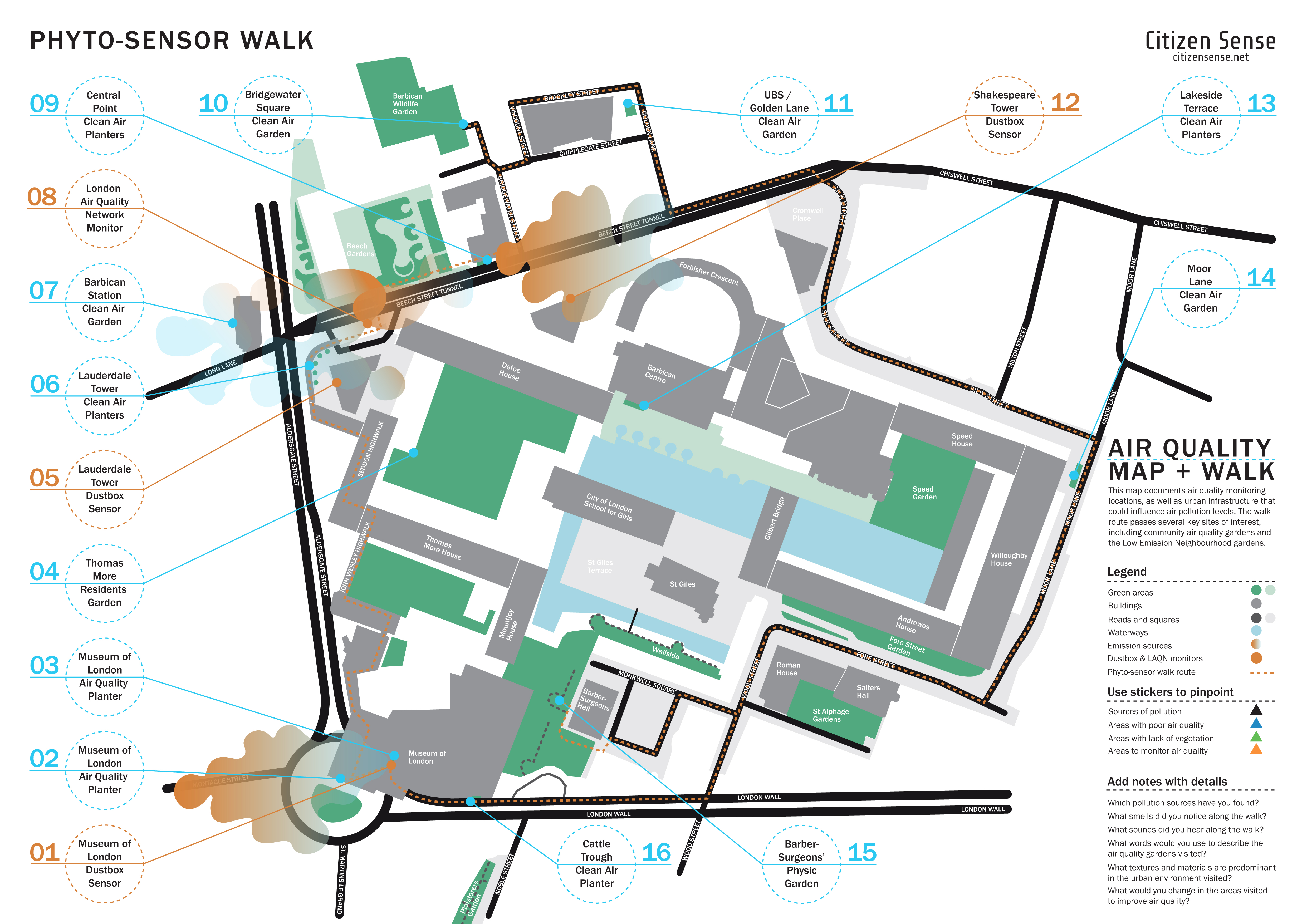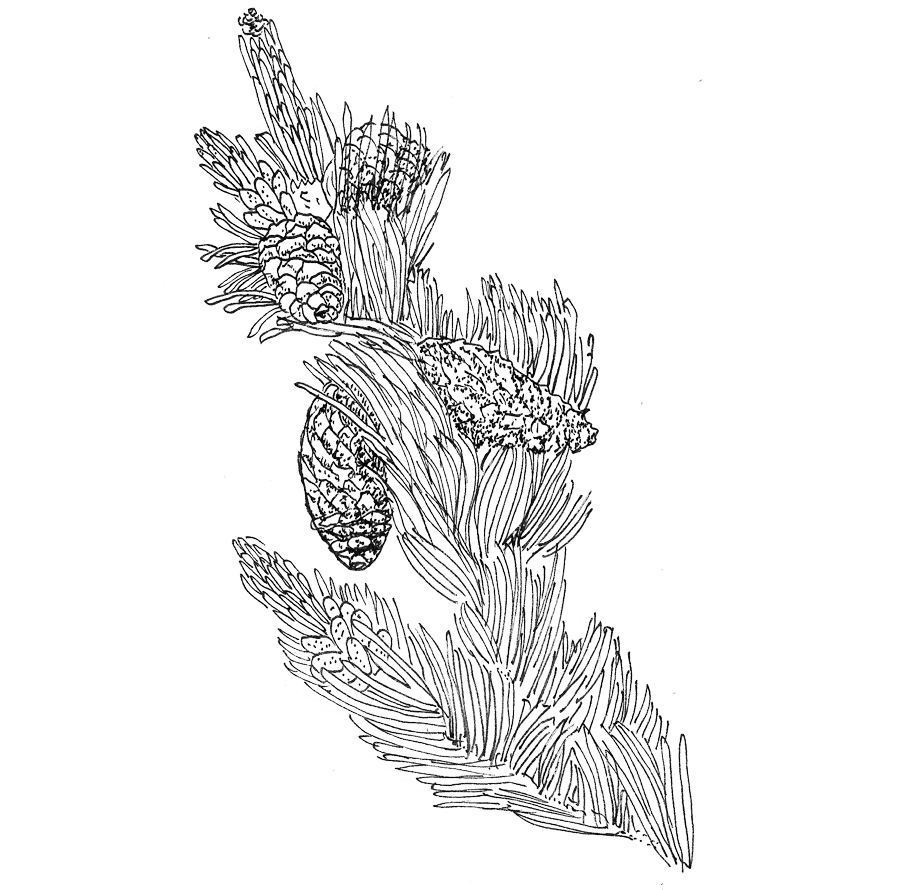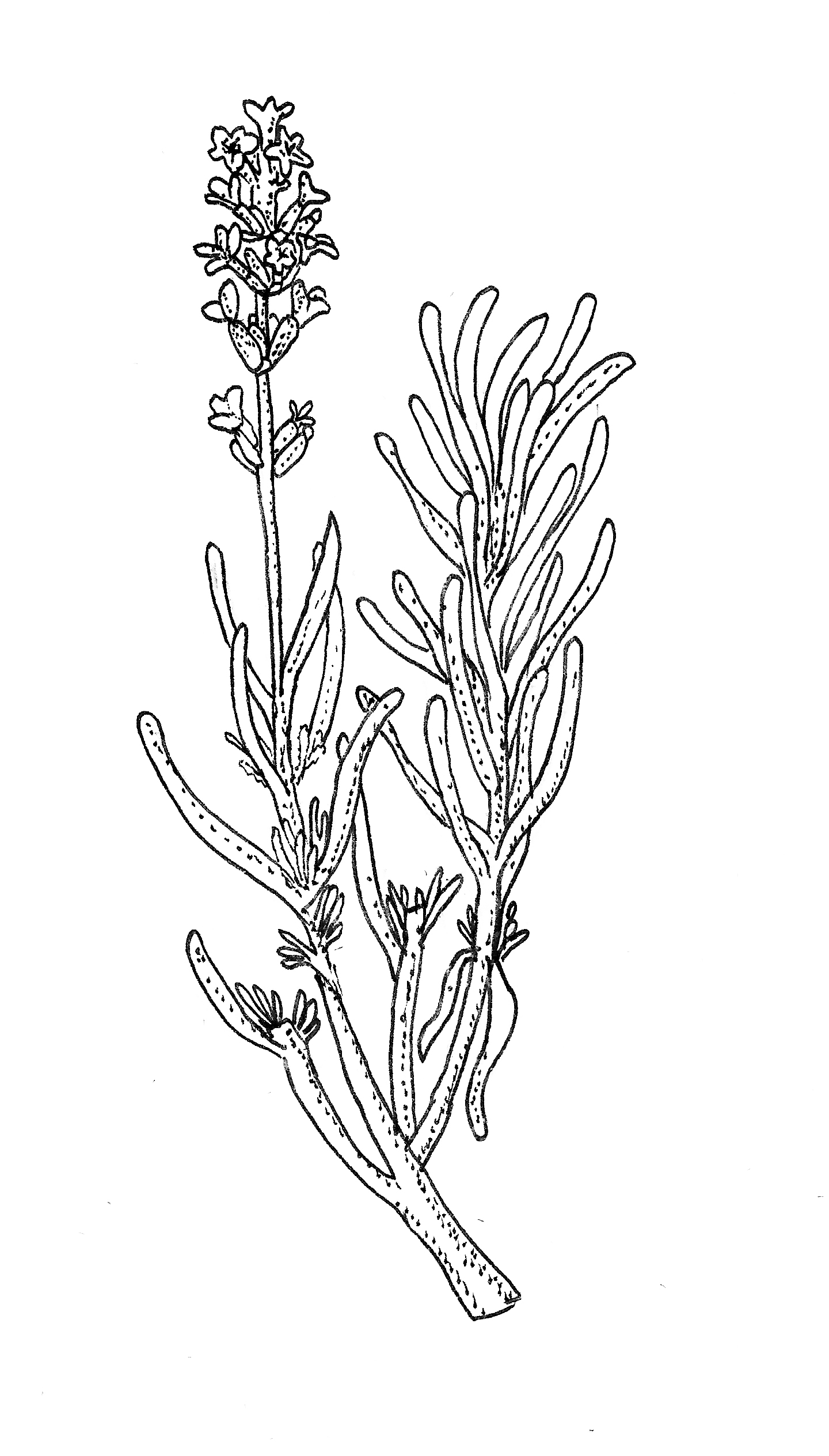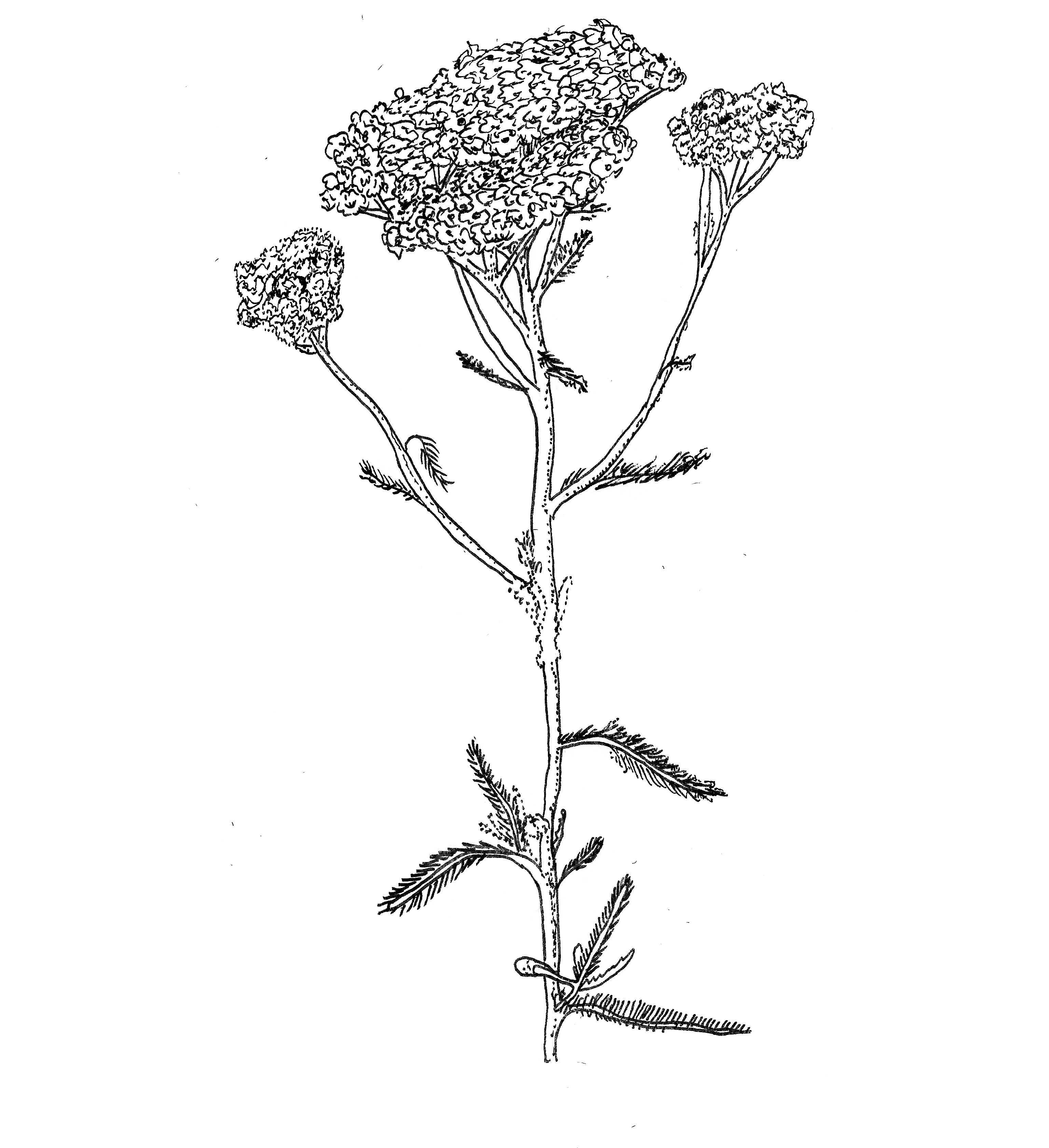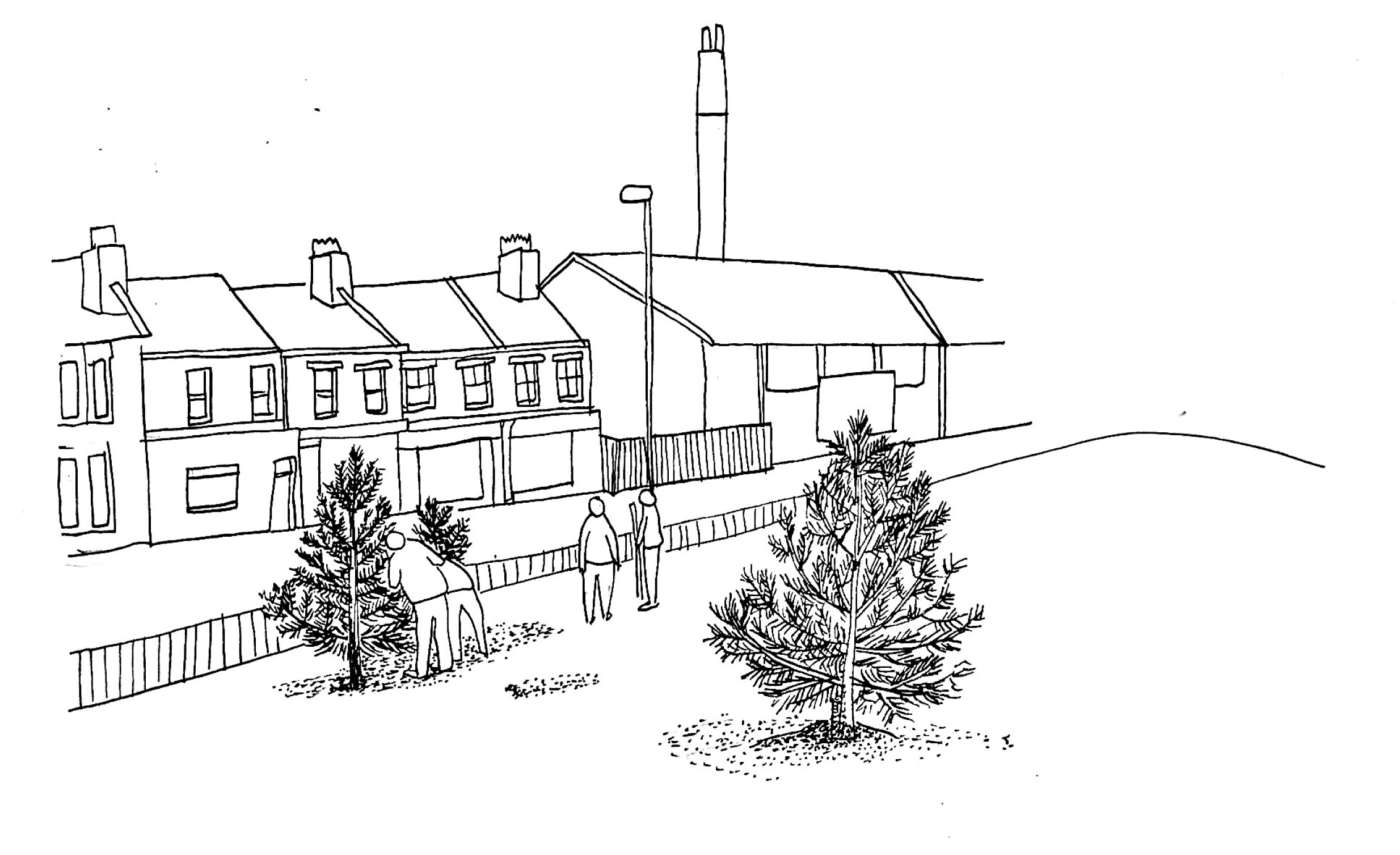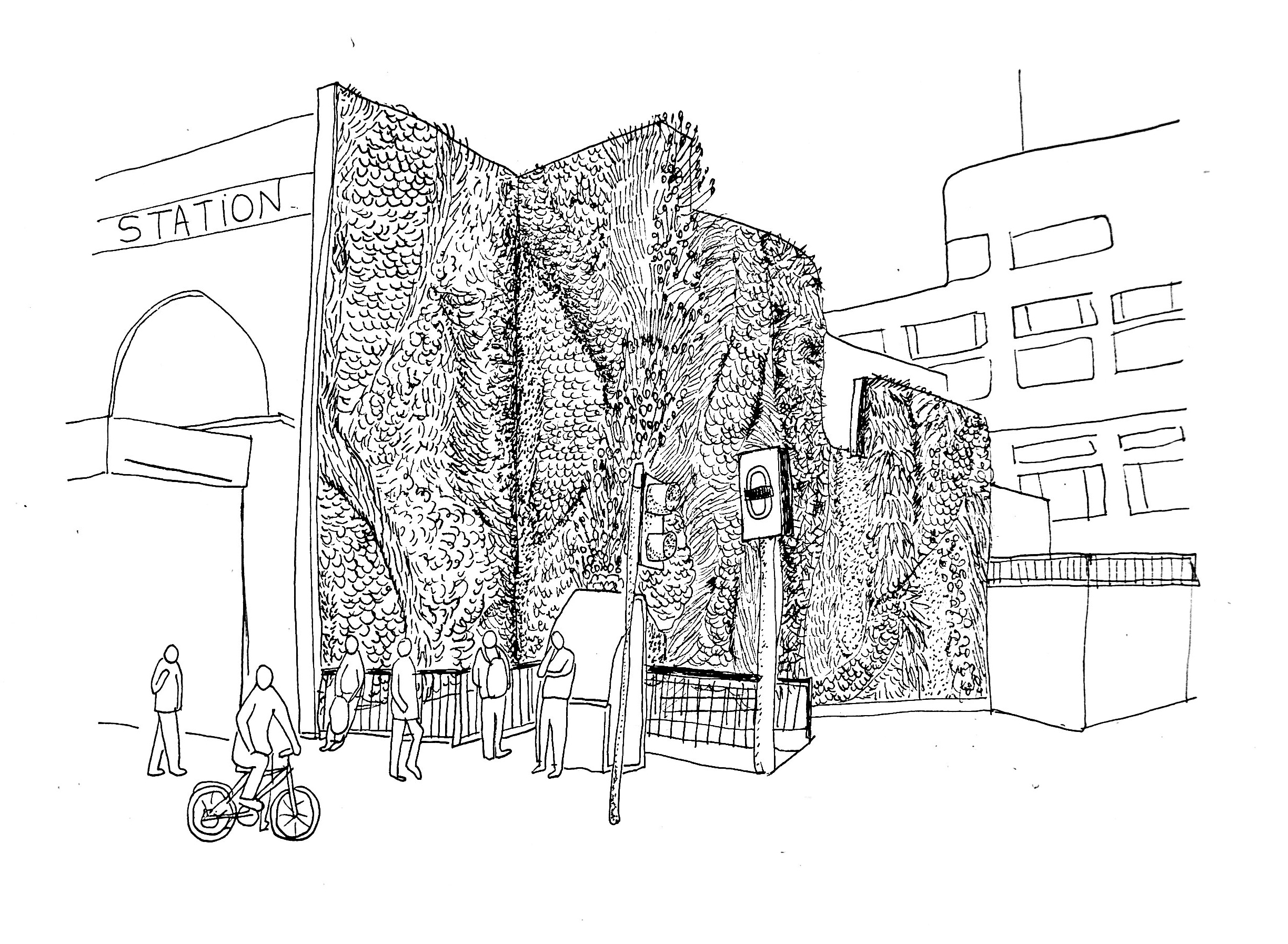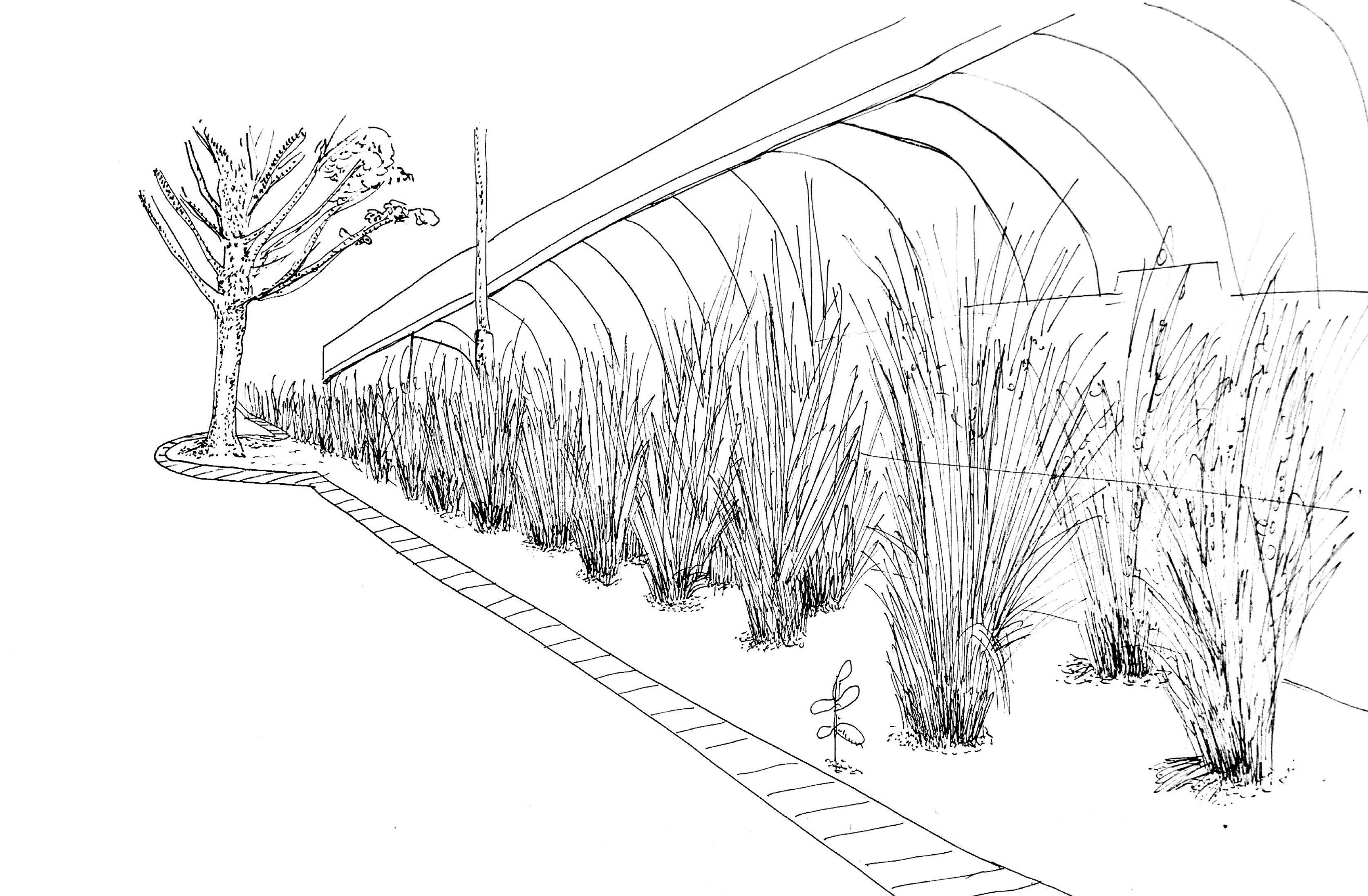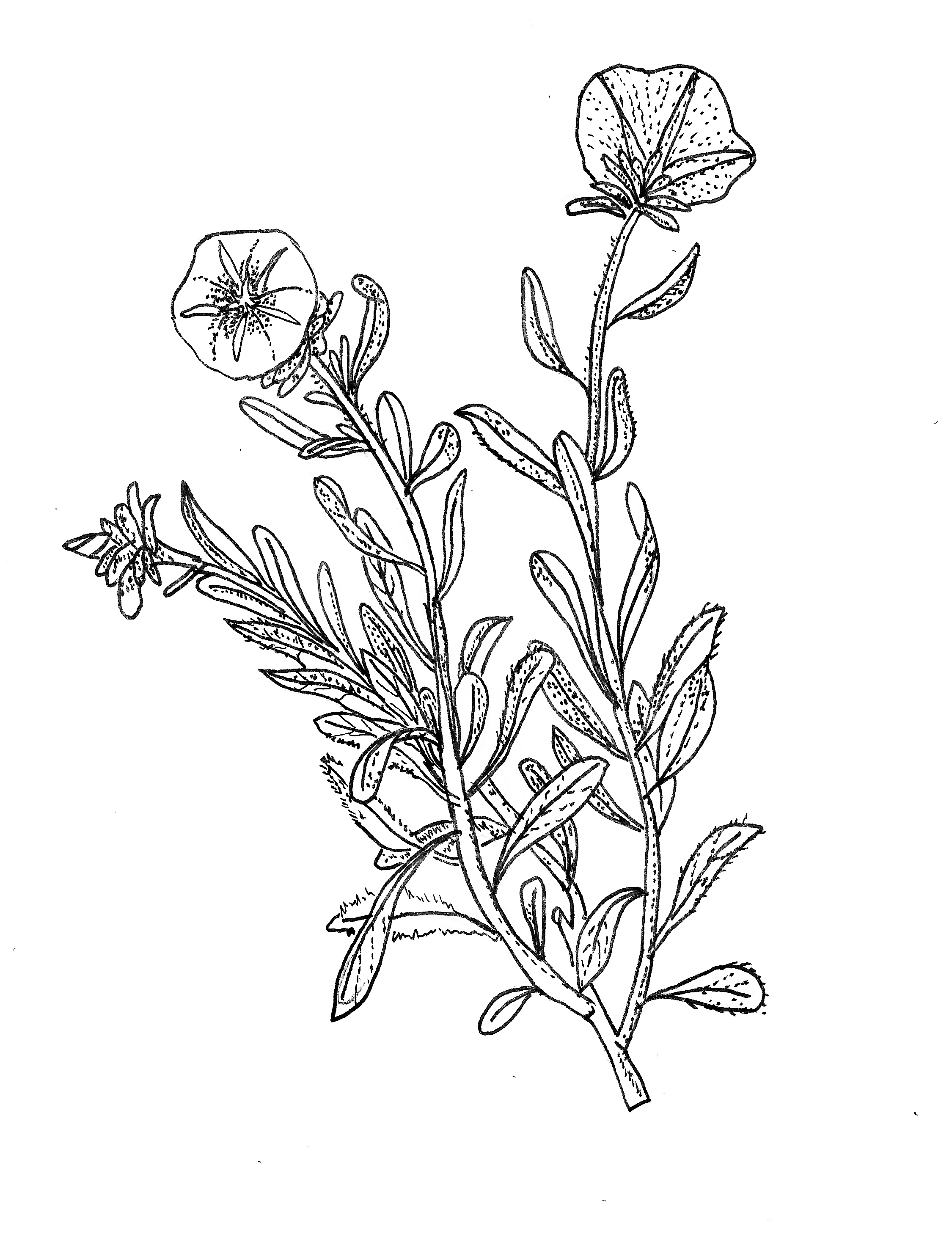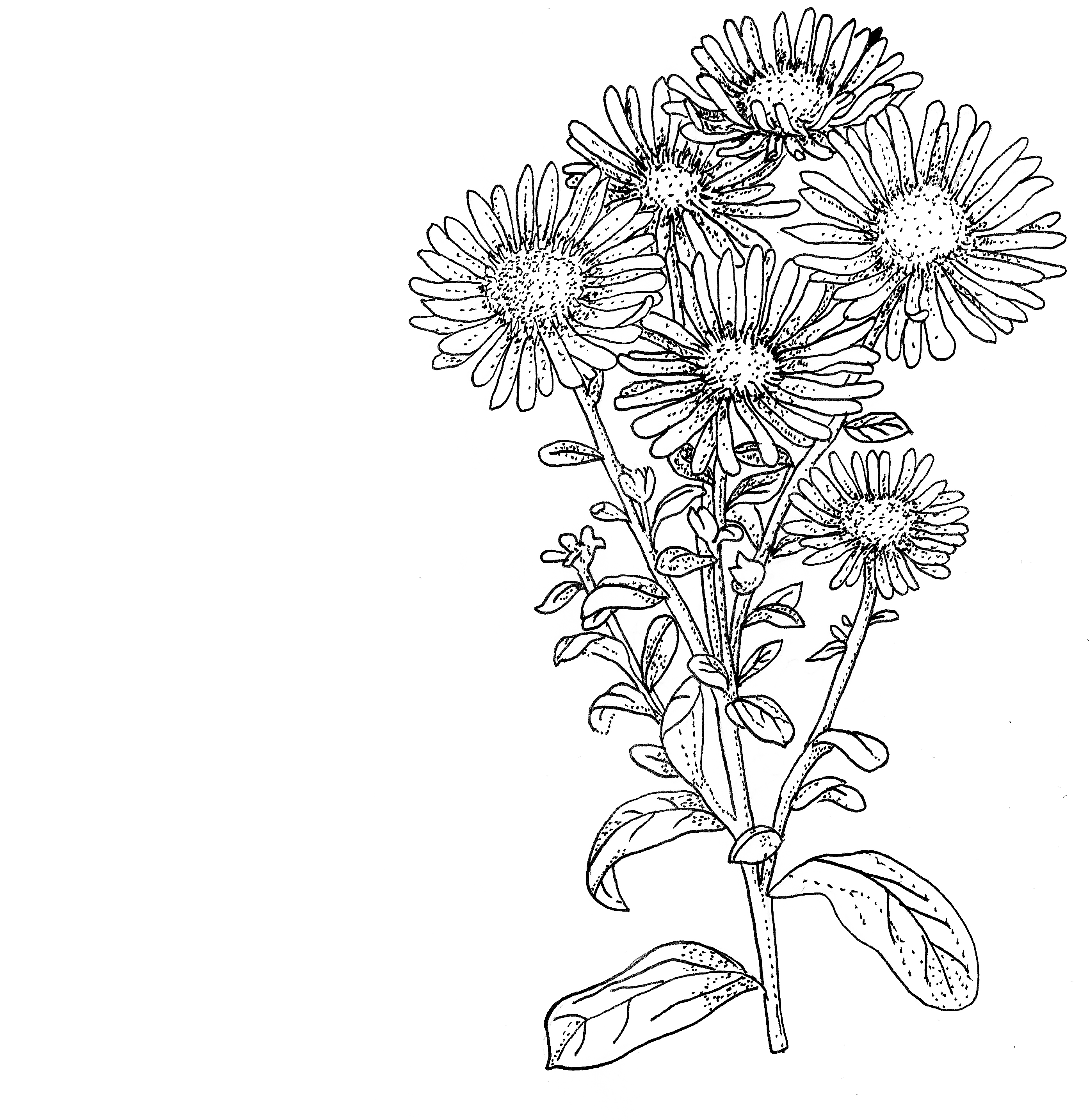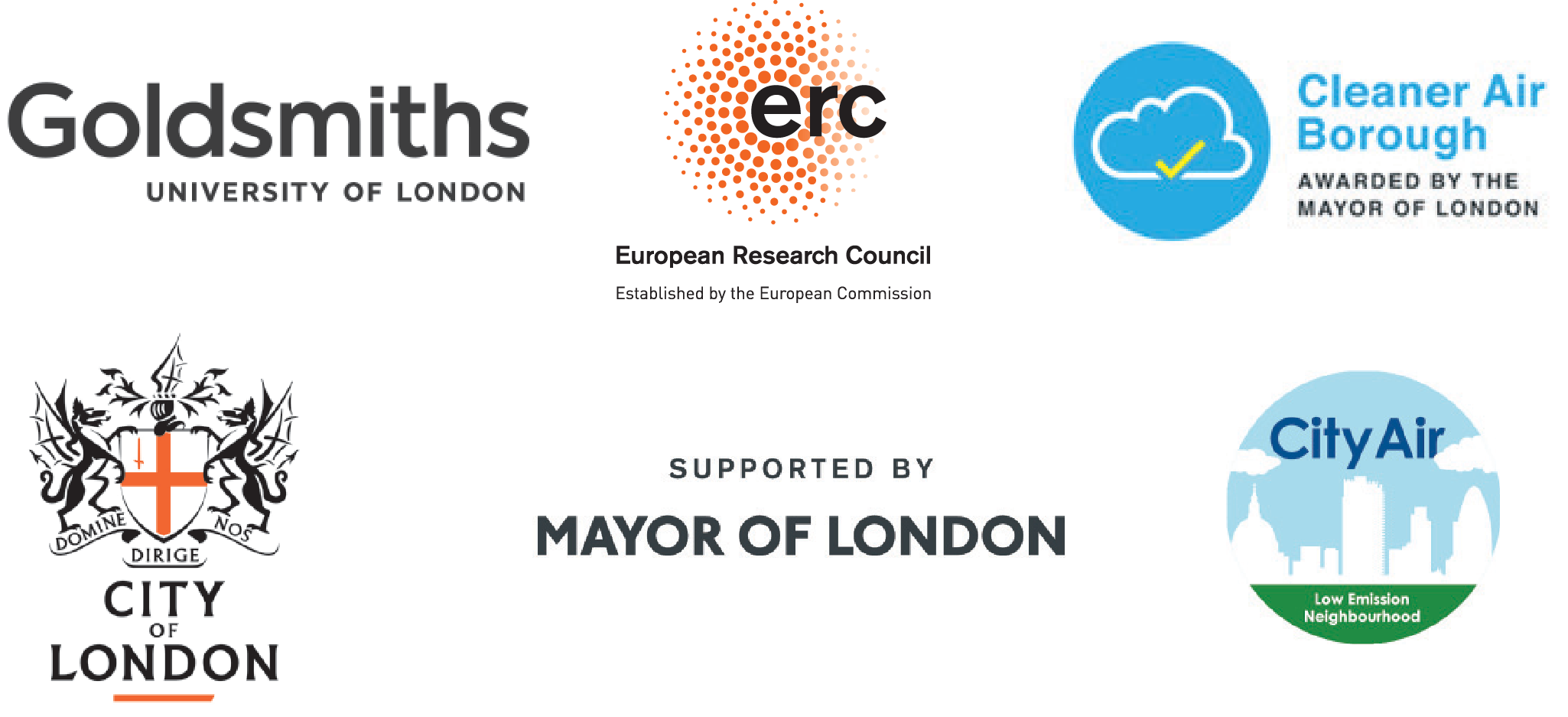Building an quality garden
Included in this section are additional resources to help you start your own air quality garden. You might select air quality plants for your own garden, or you might be interested to start a project to green an area in your community. Due to budget cuts, many local governments are not replacing trees or adding to the stock of new vegetation, so community efforts to improve the urban environment are more important than ever.
This section includes plant and tree lists that could be included in an air quality garden, as well as references for researching more about the interactions between vegetation and air quality. To find out more on how to grow particular plants and to see whether they are suitable for your location, the Royal Horticultural Society (RHS) website’s plant finder is a useful resource: https://www.rhs.org.uk/plants.
Things to keep in mind when undertaking your air quality garden include:
1. Identify a location:
By selecting the best location for your air quality garden you can ensure it has the most impact. Because vegetation provides quite local improvement to air quality, knowing where to plant can make the biggest difference in mitigating air pollution. You can use a range of additional techniques, from citizen monitoring to mapping locations of trees in relation to pollution levels, to identify the best locations for planting vegetation.
You might also want to plant near schools, residential areas, hospitals or parks in order to minimize the effects of air pollution on certain populations. According to the Nature Conservancy report, “Planting Healthy Air,” those areas with the highest pollution and highest population density can be key areas to target as areas for planting.
2. Find collaborators
Existing community or gardening groups might exist with whom to collaborate, or other volunteers and neighbours might want to work together to install an air quality garden. By working collaboratively, you can pool skills and resources, expand your network, and contribute to the wider community. Tree Societies, parks groups, allotments and gardening groups could all be worthwhile organisations to research and meet for starting a potential project.
3. Identify resources
Some resources do exist from the Mayor of London as well as councils to develop green space and green infrastructure. It is worth researching which funding sources might be available in your area. You might also be able to receive in-kind donations or donated supplies. Some garden projects have successfully used crowd-funding to support activities. By emphasizing the importance of your garden to environmental public health as well as improving air quality you might be able to find resources that are health and environment focused.
4. Design the space and select plants
There are many air quality gardens and planting schemes now built, so it is worthwhile to look at these in person to see how they are developed. A small selection of planting schemes are included in this toolkit (both on the map and in the list above), but first-hand investigation of air quality garden sites can provide many ideas for how to develop your own planting. When designing your installation, consider the site requirements as well as the emission sources and how best to plant in response to the context. When selecting plants, consider whether trees, a green screen, herbaceous plants or shrubs, or all of the above, might be best for the site conditions. This toolkit contains a sample of some effective air quality trees and plants, noting their key characteristics in relation to pollution, which can be a good place to start when selecting vegetation.
5. Get it in the ground
Once you’ve developed the design and selected the plants you will need to consider how the planting will be undertaken. Will you build the installation through volunteer effort, or will you hire a contractor? Which supplies and tools will you need to plant the garden? Remember to properly prepare the soil with compost and fertiliser, and to water the installation well. Some design groups can provide pro-bono support to help you work through how best to build a garden, and depending upon its scale, how to phase it over time. Some gardens can be built in a day, others can take longer to complete. You might also want to monitor the space with analogue or digital monitors to test whether air pollution levels change, and whether a pattern is detectable.
6. Host a launch event
Once the planting is in place, it is time to have a launch event and bring everyone together who contributed to the air quality garden. Consider letting the local press and your Local Council know about the event, and be sure to send out news on social media and post flyers locally so new community members can also learn about the space and get involved.
7. Maintenance
Maintenance can be the hardest part of ensuring the planting is successful over time. Have a look at the propositions from the Phyto-sensor workshop and walk, where many useful suggestions by participants are made about how to ensure plants receive the attention they need to become established and thrive over time. You will need to ensure systems are in place for watering, as well as pruning and weeding. Decide whether this will be undertaken as a volunteer effort, or through a contractor, and how this will be coordinated and supported over time.
Extended list of air quality plants
Included here is an extended list of plants that are best suited to reducing and/or bioindicating air pollution in the urban environment. In the following section you will also find resources for learning more about planting tress for improving air quality. While by no means definitive, the below lists should provide a starting point for putting together an air pollution garden that can be studied and engaged with in relation to air quality. To assess the suitability of planting these trees and plants in a particular context, you can search and review plants at the Royal Horticultural Society plant finder at: https://www.rhs.org.uk/plants.
Particulate Matter (PM)
Plants that interact with particulate matter primarily have dispersal and deposition effects, where vegetation can influence the flow and movement of particulates, and/or particulates can be trapped on the surface of vegetation. Plants with hairy/hirsute leaves, and vegetation with large or broad leaves, as well as plants with grooves on their leaves tend to be the most effective for capturing particulates.
Example plants and shrubs include:
- Achillea millefolium (Yarrow)
- Alchemilla mollis (Lady’s Mantle)
- Amelanchier lamarckii (Juneberry—small tree/shrub)
- Aster spp. (Aster)
- Convolvulus cneorum (Silverbush)
- Erysimum (Wallflower)
- Euonymus japonicas (Spindle)
- Euphorbia characias (Mediterranean Spurge)
- Forsythia × intermedia (Forsythia)
- Geranium maculatum (Cranesbill Geranium)
- Hebe spp. (Shrubby Veronica)
- Hedera helix (Common Ivy)
- Heuchera (Coral Bells)
- Hydrangea arborescens (Hydrangea)
- Iris wilsonii (Iris)
- Lamium maculatum (Spotted Deadnettle)
- Lavandula spp. (Lavender)
- Osmanthus delavayi (Delavay Osmanthus)
- Parthenocissus quinquefolia (Virginia Creeper)
- Parthenocissus tricuspidata (Boston Ivy)
- Physocarpus opulifolius (Ninebark)
- Pinus mugo (Creeping Pine)
- Pyracantha (Firethorn)
- Salvia spp. (Sage)
- Sorbaria sorbifolia (False Spirea)
- Spiraea sp. (Spiraea)
- Stachys byzantine (Lamb’s Ear)
- Stephanandra incisa (Laceshrub)
- Syringa meyeri (Lilac)
- Taxus baccata (Yew)
- Taxus x media (Yew)
- Verbena bonariensis (Verbena)
- Vitis spp. (Grape)
Nitrogen Dioxide (NO2)
Most of the research in relation to vegetation and reducing nitrogen oxides levels focuses on trees. Some of the plants included here are woody species that could grow as shrubs or small trees. Green walls are seen to be a beneficial way to reduce NO2, including with Common Ivy. Grass is also a potentially beneficial plant for reducing NO2. Some of the plants listed above in relation to particulates also have some mitigating effect on NO2.
Example trees and plants include:
- Magnolia kobus (Magnolia)
- Nicotiana tabacum (Cultivated Tobacco)
- Robinia pseudoacacia (False Acacia)
- Prunus cerasoides (Cherry)
- Prunus lannesiana (Cherry)
Ozone (O3)
Plants that interact with ozone do so typically in a bioindicative way or through demonstrating sensitivity and thereby demonstrating the relative presence or absence of ozone on the basis of the health and appearance of plants. Note that these plants do not absorb ozone, but rather indicate the presence of this pollutant, and so can be damaged when ozone levels are high. NASA has put together an ozone bioindicator garden, including plants and monitoring protocols, for assessing ozone. To see this garden, visit: https://science-edu.larc.nasa.gov/ozonegarden/garden-design.php.
The NASA Ozone Bioindicator Garden plants include:
- Rudbeckia lacinata (Cut-Leaf Coneflower)
- Phaseolus vulgaris (Snap Bean)
- Asclepias syriaca (Milkweed)
Some additional plants sensitive to ozone include:
- Armeria maritima (Thrift)
- Artemisia spp. (Mugwort)
- Aster spp. (Aster)
- Campanula rotundifolia (Common Harebell)
- Festuca rubra (Red Fescue)
- Molinia caerulea (Purple Moor Grass)
- Oenothera spp. (Evening Primrose)
- Physocarpus spp. (Ninebark)
- Potentilla erecta (Cinquefoil)
- Rhus typhina (Sumac)
- Sambucus racemosa (Red Elder)
- Solanum tuberosum (Potato)
- Sorbaria sorbifolia (False Spirea)
- Symphoricarpos albus (Snowberry)
- Vaccinium myrtillus (Bilberry)
- Vitis spp. (Grape)
Benzene, Formaldehyde and Trichloroethylene (indoor pollutants)
In addition to the above, NASA has undertaken research on indoor plants to demonstrate their effect on reducing levels of VOCs. Some of these plants, such as ferns (Boston fern), could also be suitable for outdoor planting. Indoor air quality is affected by outdoor air quality, and can often be worse due to the number of plastic-based and synthetic items found in the home. However, these air pollutants are not monitored through the LAQN, and are not typically monitored through citizen devices, so parallel data would not be readily available for assessing the possible mitigating effect of the plants.
Example plants for addressing indoor air quality include:
- Aloe vera (Aloe)
- Chamaedorea seifritzii (Bamboo Palm)
- Chrysantheium morifolium (Chrysanthemum)
- Chlorophytum comosum (Spider Plant)
- Dracaena deremensis “Janet Craig” (Janet Craig)
- Dracaena deremensis “Warneckei” (Warneckei)
- Dracaena marginata (Marginata)
- Dracaena massangeana (Mass Cane)
- Ficus benjamina (Weeping Gig)
- Gerbera jamesonii (Gerbera Daisy)
- Hedera helix (English Ivy)
- Rhododendron simsii (Azalea)
- Sansevieria trifasciata ‘Laurentii’ (Snake Plant)
- Spathiphyllum “Mauna Loa” (Peace Lily)
Extended list of air quality trees
Included here is an extended list of trees that are best suited to reducing air pollution in the urban environment. These trees are selected for the UK and zones with similar climatic conditions. In the references section you will also find resources for learning more about planting tress for improving air quality. This list is informed by the Woodland Trust report, “Urban Air Quality” (2012), which ranks trees according to their Urban Air Quality Tree Score (UTAQs) based on the research of Donovan (2005). Trees with high scores are generally better for air quality.
Trees with the highest UTAQs:
- Alnus glutinosa (Alder)
- Acer campestre (Field Maple)
- Acer platanoides (Norway Maple)
- Betula pendula (Birch)
- Chamaecyparis lawsoniana (Lawson Cypress)
- Crataegus monogyna (Hawthorn)
- Larix decidua (Larch)
- Pinus nigra cvs. (Pine)
- Prunus laurocerasus (Laurel)
Trees with medium UTAQs:
- Acer pseudoplantanus (Sycamore)
- Alnus cordata (Italian Alder)
- Alnus incana (Grey Alder)
- Corylus avellana (Hazel)
- Cuprocyparis leylandii (Leyland Cypress)
- Fraxinus excelsior (Ash)
- Ilex aquifolium (Holly)
- Malus spp. (Apple)
- Prunus avium (Cherry)
- Sambucus nigra (Elder)
- Sorbus aucuparia (Rowan)
- Syringa vulgaris (Lilac)
- Tilia x europaea (Common Lime)
- Ulmus procera (English Elm)
Trees with low UTAQs:
- Quercus petraea (Sessile Oak)
- Quercus robur (English Oak)
- Quercus rubra (Red Oak)
- Populus tremula (Aspen)
- Salix alba (White Willow)
- Salix caprea (Goat Willow)
- Salix fragilis (Crack Willow)
References
There is a wide array of research on plant responses to air pollution, as well as suggestions for best plants to install to improve air quality. Included here is a selection of resources and references for following up with further research on air quality gardens and plants in the UK and across the world.
Abhijith, K.V. et al. “Air pollution abatement performances of green infrastructure in open road and built-up street canyon environments: A review.” Atmospheric Environment 162 (2017), 71-86.
Alcock, I. et al. “Land cover and air pollution are associated with asthma hospitalisations: A cross-sectional study.” Environment International 109 (2017), 29–41.
Ansari, A.A. et al., eds. Phytoremediation: Management of Environmental Contaminants (volumes 1-5). Springer, 2015.
Beckett, K.P. et al. “Particulate pollution uptake by trees: impact of species and wind speed.” Global Change Biology 6 (2000), 995-1004.
Churkina, G. et al. “Natural selection? Picking the right trees for urban greening.” Environmental Science & Policy 47 (2015) 12-17.
City in Bloom. “Clean and green for 2017 air quality challenge: Plants to capture and mitigate particulate air pollution.” http://www.cityinbloom.org/2017.html.
City in Bloom. The Clean Air Gardens. The City of London, 2017.
City of Westminster. “Trees and the public realm: A tree strategy for Westminster.” Supplementary Planning Document (Adopted 6 September 2011). http://transact.westminster.gov.uk/docstores/publications_store/Trees_&_the_Public_Realm_Adopted_Strategy_September_2011.pdf.
City of London. “Biodiversity action plan.” 2003.
City of London. “City gardens: Small public gardens, churchyards and squares habitat action plan.” November 2004
City of London. “Biodiversity action plan, 2016-2010.” https://www.cityoflondon.gov.uk/ things-to-do/green-spaces/city-gardens/wildlife-and-nature/Documents/city-of-london-biodiversity-action-plan-2016-2020.pdf
Donovan, R. et al. “Development and application of an urban tree air quality score for photochemical pollution episodes using the Birmingham, United Kingdom, area as a case study.” Environmental Science & Technology 39 (2005), 6730–6738.
Grote, R. et al. “Functional traits of urban trees: air pollution mitigation potential.” Frontiers of Ecology and Environment 14, no. 10 (2016), 543–550.
https://esajournals.onlinelibrary.wiley.com/doi/pdf/10.1002/fee.1426.
Hirabayashi, S. and D.J. Nowak. “Comprehensive national database of tree effects on air quality and human health in the United States.” Environmental Pollution 215 (2016), 48-57.
Izuta, Takeshi, ed. Air Pollution Impacts on Plants in East Asia. Springer Japan, 2017
Janhäll, Sara. “Review on urban vegetation and particle air pollution – Deposition and dispersion.” Atmospheric Environment Volume 105 (March 2015), 130-137.
Kulshrestha, U. and P. Saxena, eds. Plant Responses to Air Pollution. Springer, 2016.
Lelieveld, J. et al. “The contribution of outdoor air pollution sources to premature mortality on a global scale.” Nature 525 (2015), 367-371.
McDonald, R. et al. “Planting healthy air: A global analysis of the role of urban trees in addressing particulate matter pollution and extreme heat.” Nature Conservancy. October 2016. https://global.nature.org/content/healthyair?src=r.global.healthyair
Mitchell, R. et al. “Rates of particulate pollution deposition onto leaf surfaces: Temporal and inter-species magnetic analyses.” Environmental Pollution 158, no. 5 (May 2010), 1472-1478.
Ota, K. “Effects of sulfur dioxide on flowering of Osmanthus.” Journal of the Japanese Institute of Landscape Architects 36, no. 4 (1972), 25-31.
Porter, E. “Ozone sensitive plant species on National Park Service and U.S. Fish and Wildlife Service lands.” U.S. Department of the Interior, National Park Service Air Resources Division, Denver, Colorado U.S. Fish and Wildlife Service Air Quality Branch, Denver, Colorado (2003). https://www.nature.nps.gov/air/Pubs/pdf/BaltFi- nalReport1.pdf.
Pugh, T.A.M. et al. “Effectiveness of green infrastructure for improvement of air quality in urban street canyons.” Environmental Science & Technology 46, no. 14 (2012), 7692-7699.
Royal Horticultural Society (RHS), “Something in the air.” Grass Roots issue 31 (Autumn 2017). https://www.rhs.org.uk/about-the-rhs/pdfs/ publications/grass-roots/Grass-Roots-Autumn-2017.pdf
Sæbø, A. et al. “Plant species differences in particulate matter accumulation on leaf surfaces.” Science of the Total Environment 427-428 (2012), 347-354.
Shackleton, K. et al. “The role of shrubs and perennials in the capture and mitigation of particulate air pollution in London.” Centre for Environmental Policy, Imperial College London, 2010
Smith, J. “Urban air quality.” April 2012. Woodland Trust. https://www.woodlandtrust.org.uk/mediafile/100083924/Urban-air-quality-report-v4-single-pages.pdf.
Sternberg, T. et al. “Dust particulate absorption by ivy (Hedera helix L) on historic walls in urban environments.” Science of the Total Environment 409, no. 1 (2010), 162–168.
Takahashi, R. and T. Osawa. “Effect of air pollution on flowering of Osmanthus and autumn coloring of Ginkgo leaves in Osaka region.” Journal of the Japanese Institute of Landscape Architects 35, no. 1 (1971), 22-30.
Tremper, A.H. et al. “Impact of green screens on concentrations of particulate matter and oxides of nitrogen in near road environments.” Prepared for the Royal Borough of Kensington and Chelsea. February 2015. King’s College London. Available at https://www.londonair.org.uk/london/reports/GreenScreen_Report.pdf.
Vallano, D.M. and J.P. Sparks. “Quantifying foliar uptake of gaseous nitrogen dioxide using enriched foliar 15N values.” New Phytologist 177 (2008), 946-955.
Weber, F. et al. “Herbaceous plants as filters: Immobilization of particulates along urban street corridors.” Environmental Pollution 186 (2014), 234-240.
Wolverton, B.C. et al. “Interior landscape plants for indoor air pollution abatement.” National Aeronautics and Space Administration (NASA), John C. Stennis Space Center, Science and Technology Laboratory. September 15, 1989.
Yli-Pelkonen, V. et al. “Urban forests near roads do not reduce gaseous air pollutant concentrations but have an impact on particles levels.” Landscape and Urban Planning 158 (2017), 39-47.
